May 19, 2019 - Military Aviation Museum, Virginia Beach, World War II Airshow - Part I
|
|
The Military Aviation Museum is located at their own private airfield in Virginia Beach. They have one most extensive World War I and World War II airworthy warbird collections in the world. Every year, they fly their WWII stuff at an airshow in the spring, and the WWI stuff at an airshow in the fall. They airfield is private but they let you fly in for the airshows with prior permission. I called a week ahead of time and had no problem.
I've been trying to make it to the WWII airshow for the last three years, but each year the weather was too poor to go. But this year the weather was fine. It's on!
I flew down Sunday morning. The weather was fine for an airshow but not that great for a cross-country flight. It was very hazy and bumpy below 1,500 feet.
Here I'm down at the southern end of the DelMarVa peninsula. I was surprised by the large expanse of solar panels down here. I think they are relatively new.
|
| |
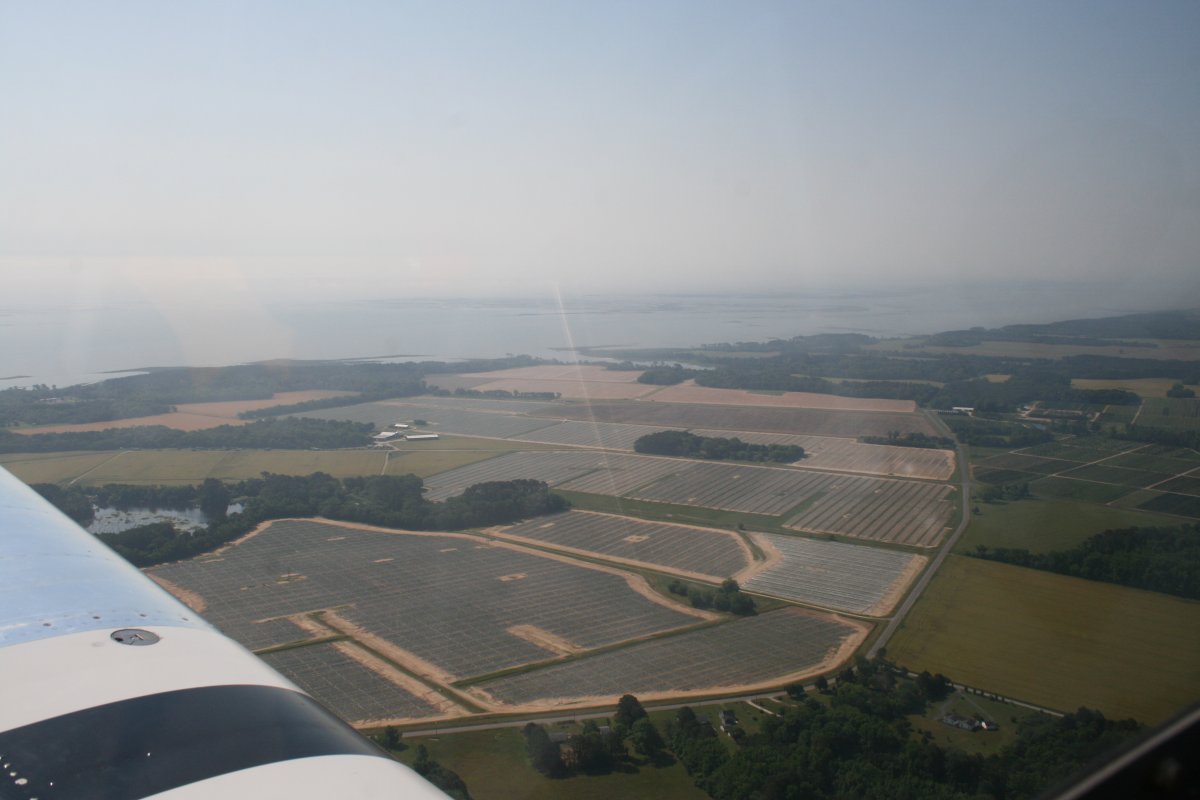 |
|
|
Looking east at the barrier islands. Look how crummy the visibility is. Plus bumpy down low.
|
| |
 |
|
| I bopped up to 4,500 to cross over the mouth of the Chesapeake Bay and the Norfolk airspace. And then I was overhead Virginia Beach airport, home of the Military Aviation Museum. |
| |
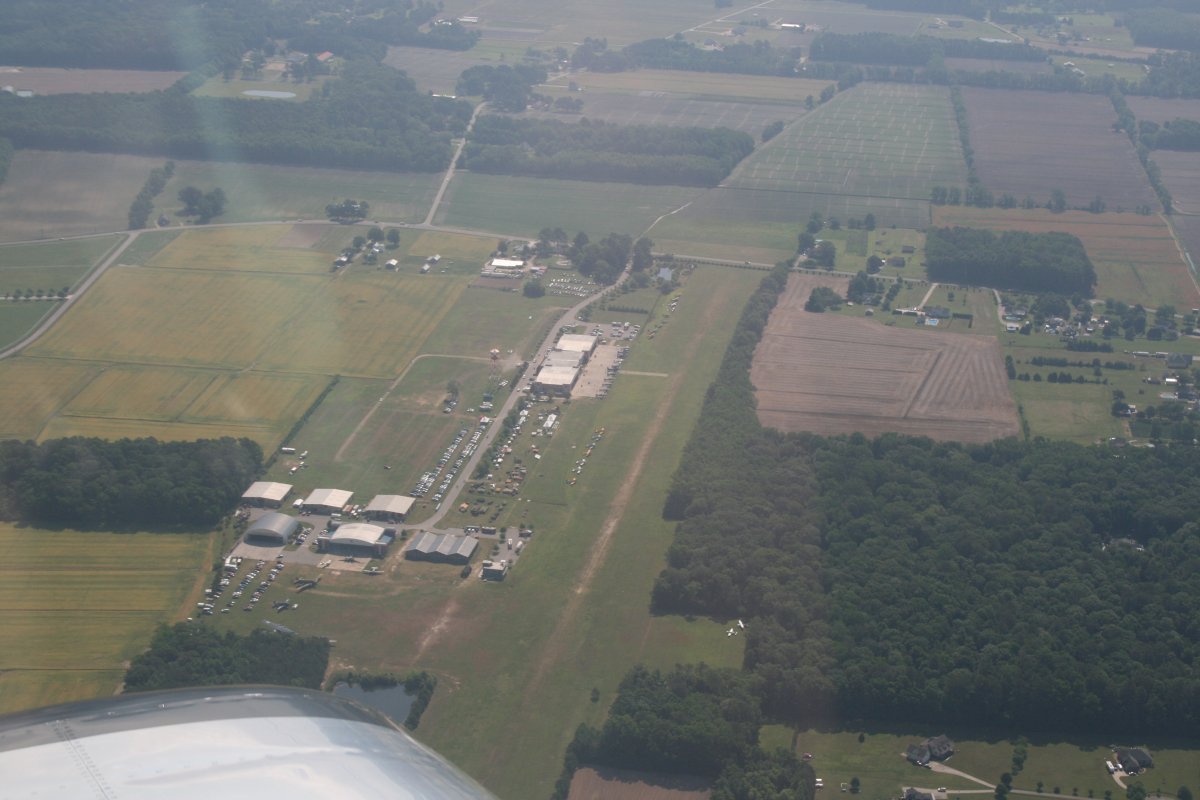 |
|
|
Looking east. The Atlantic Ocean is visible -- barely -- in the distance.
|
| |
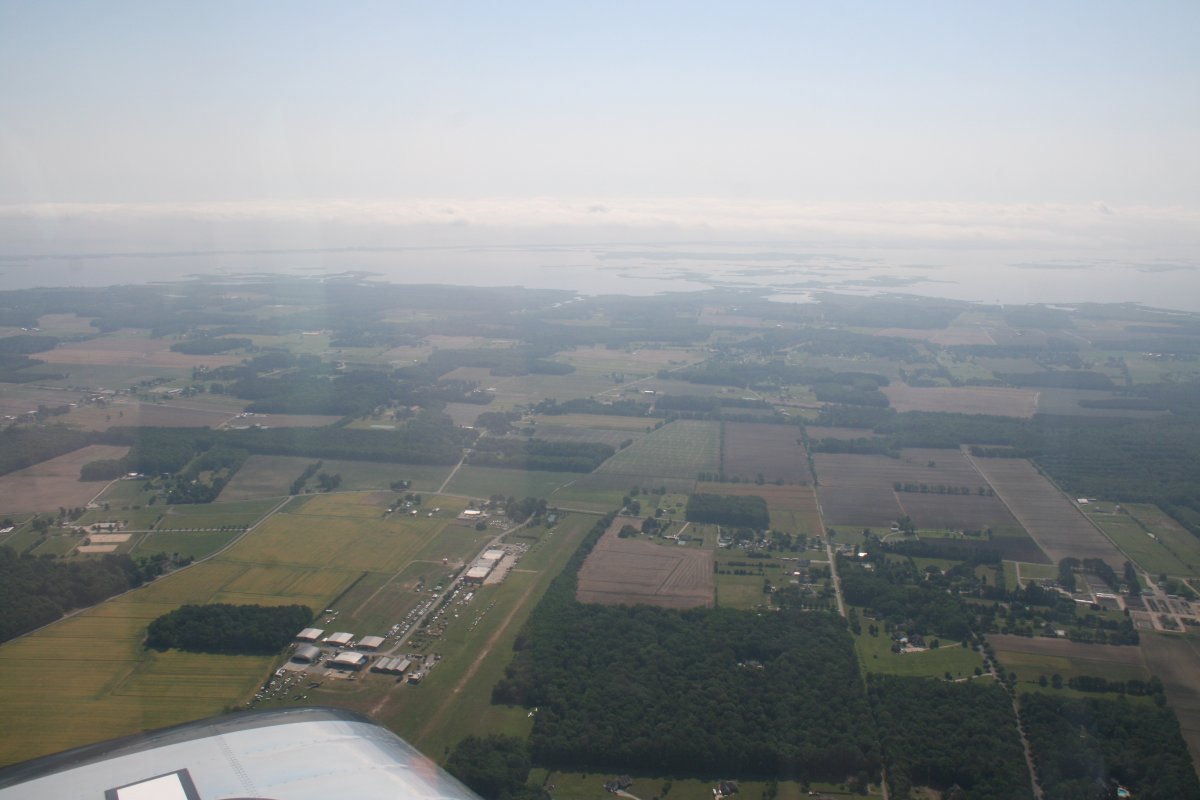 |
|
| Yes, the runway is grass, and is 4,800 feet long. Look at how many big hangars they have. |
| |
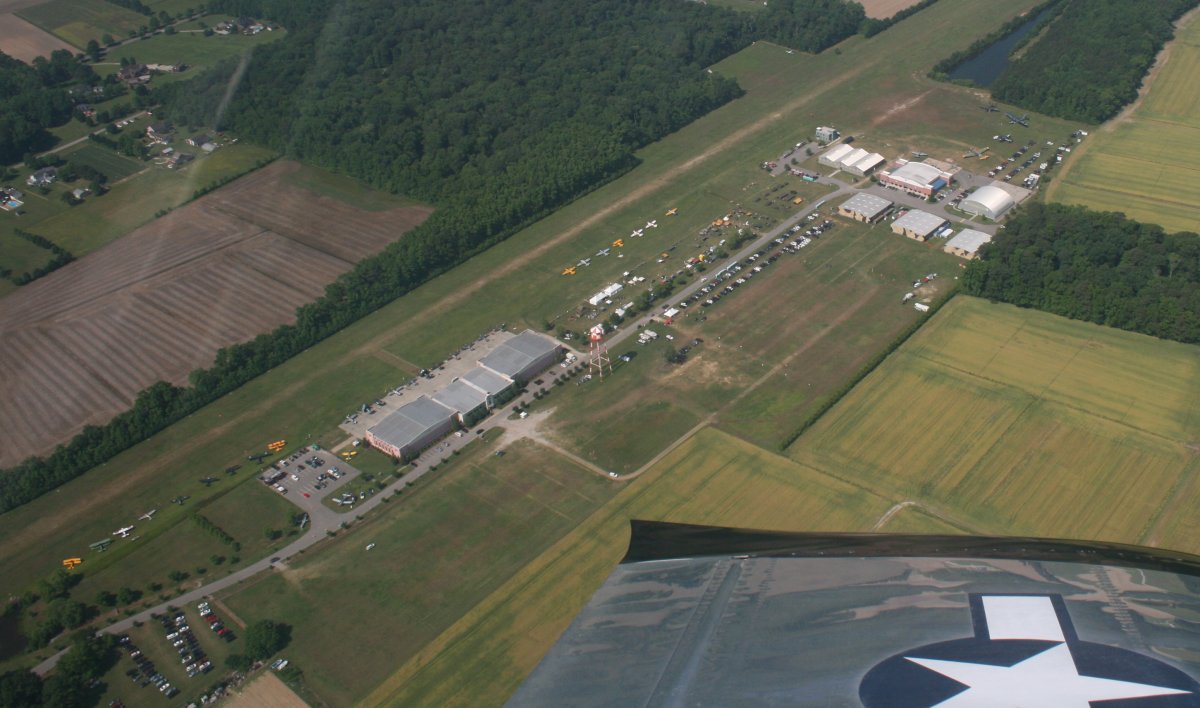 |
|
| The first plane I came to was this Messerschmitt BF-109G. I think I've this is only the second one I've seen at an airshow. The only one I've seen before was at AirVenture and I did not get to see it fly. Of course, I've seen many in museums including the one in the National Air and Space Museum (Mall). But there is something different about seeing one on the ramp ready to fly. |
| |
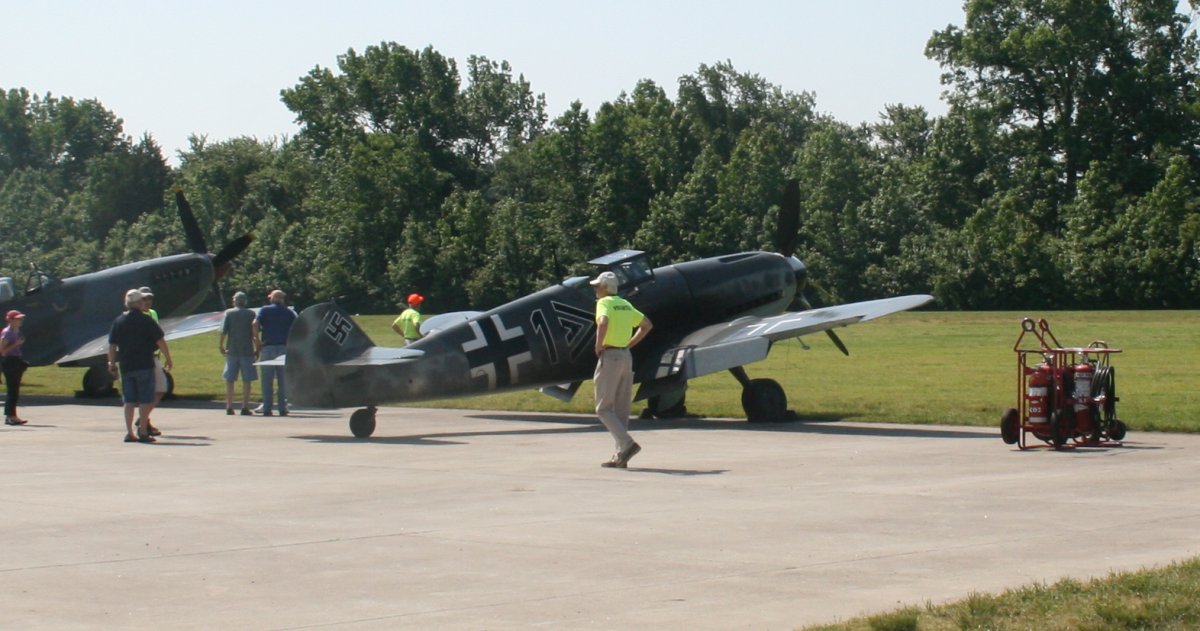 |
|
|
This isn't one of those strange looking 109s with the Merlin engine and strange cowl. This one has the authentic Daimler Benz DB 605A engine capable of 1,450 hp. The Mustang and Thunderbolt used engines putting out 1,620 and 2,000 hp respectively but I'm thinking since the 109 was so small and light, it could compete with a less powerful engine.
Third most produced plane in history: about 35,000. Number two: the Soviet Ilyushin Il ground-attack plane at 36,000. Number one? The Cessna 172! 44,000.
|
| |
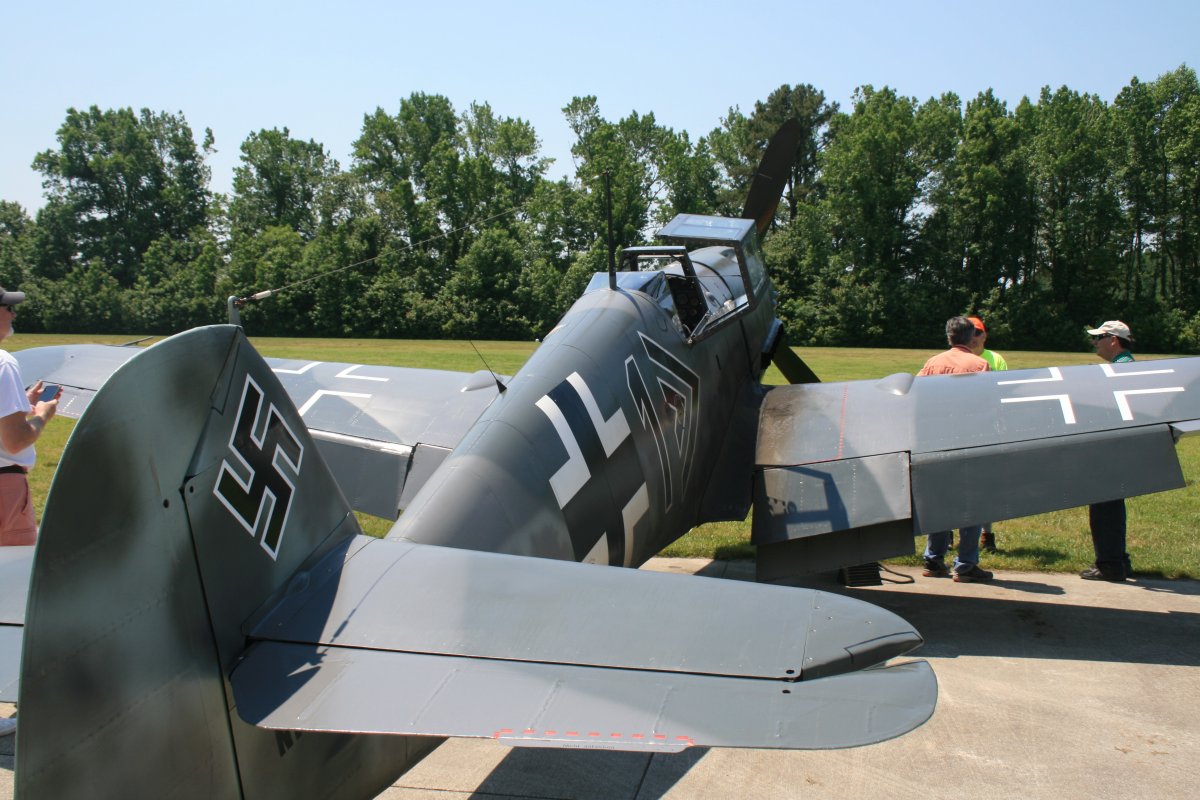 |
|
|
The paint scheme is that of Klaus Quaet-Faslem, who commanded I/JG3 and had 49 victories being being killed in a flying accident due to bad weather in January 1944 at the age of 31.
|
| |
 |
|
|
A Curtiss P-40E Kittyhawk in the colors of the plane flown by American Volunteer Group "Flying Tigers" ace David Lee "Tex" Hill, flying in Burma against the Japanese.
|
| |
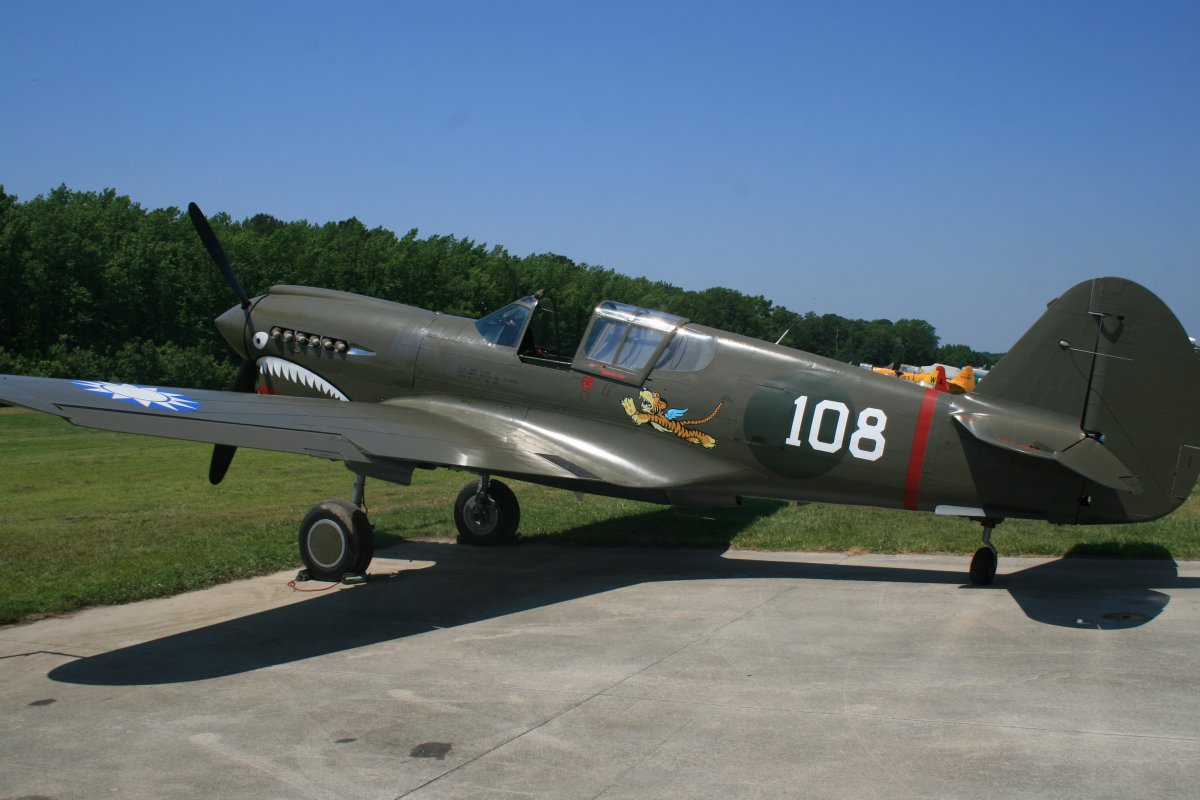 |
|
|
The P-40 just looks like it would be a good fighter.
|
| |
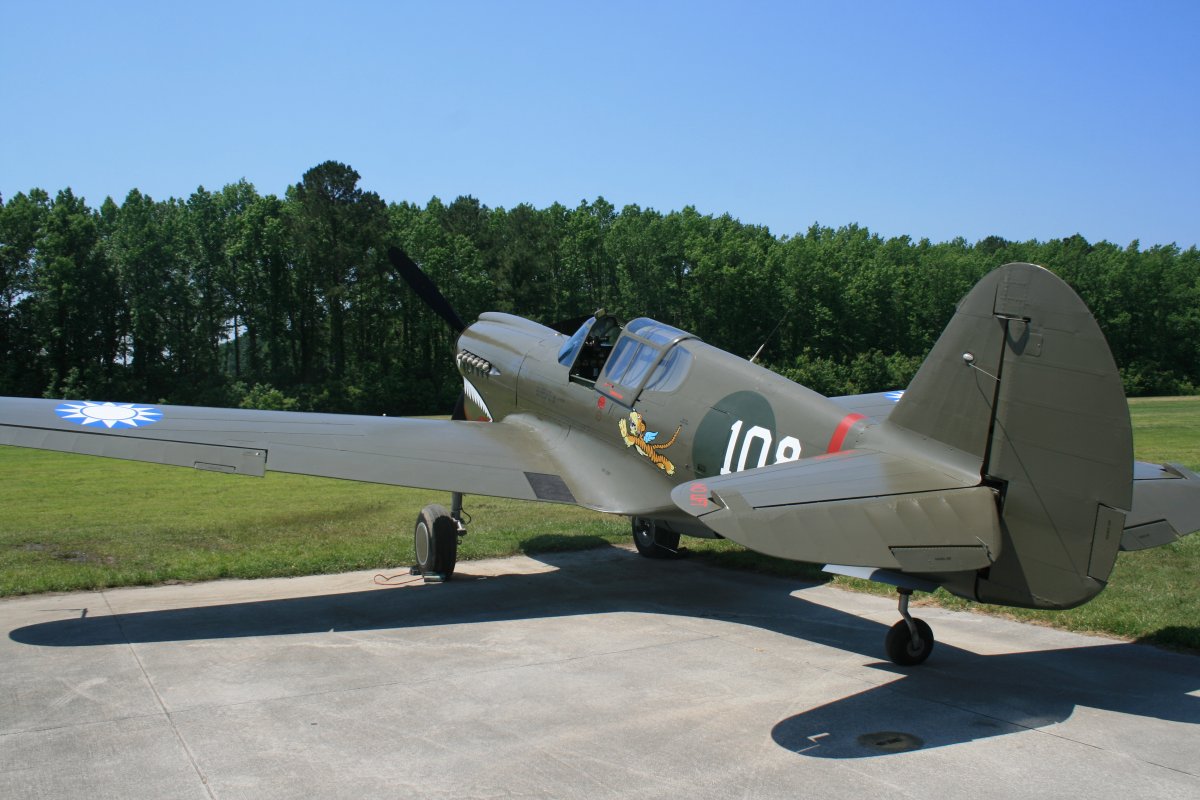 |
|
| The Hawker Hurricane of Battle of Britain fame. I've never seen one of these fly before. |
| |
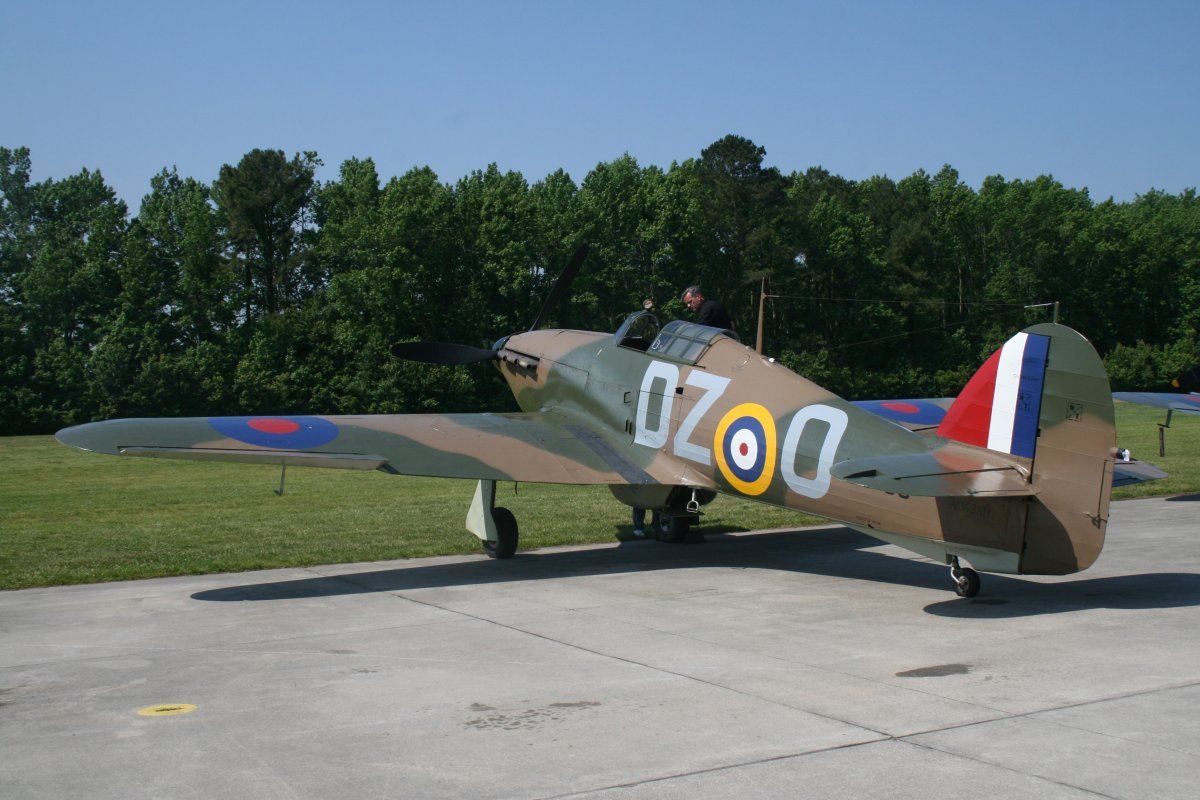 |
|
|
The elegant Supermarine Spitfire.
|
| |
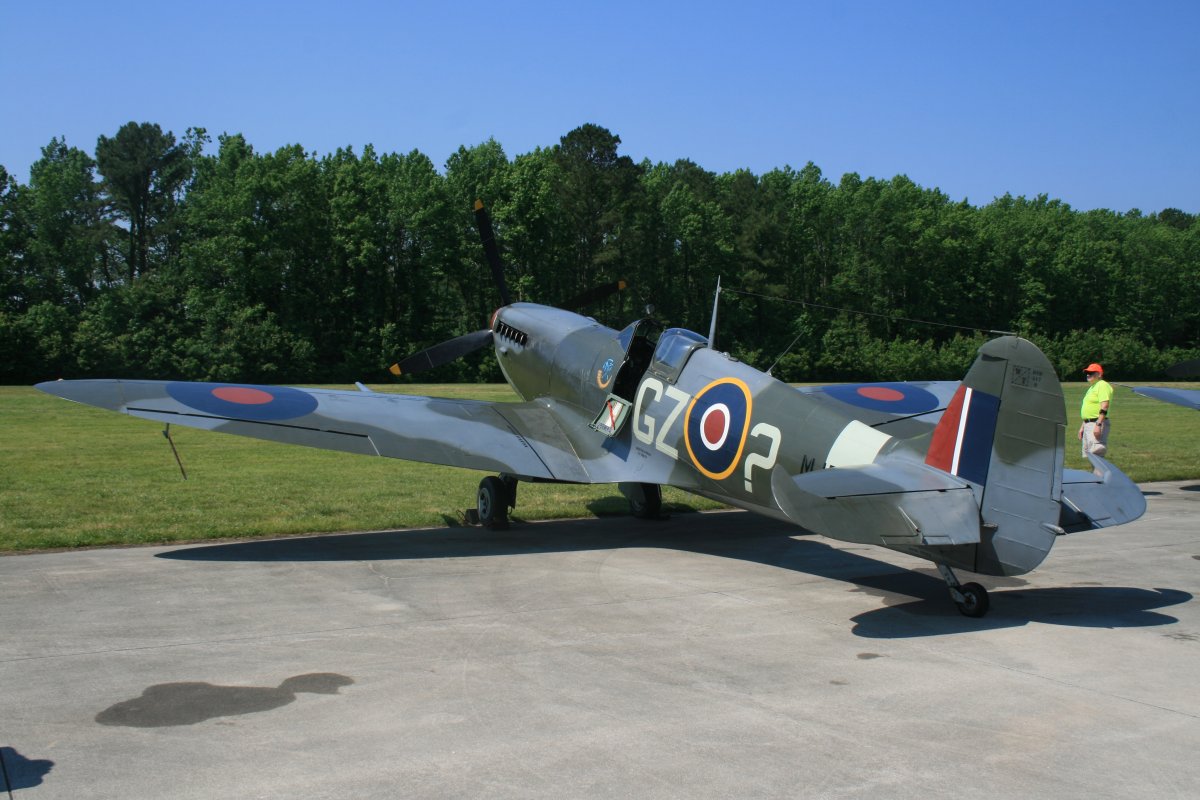 |
|
|
The P-51 Mustang, generally considered the best fighter of World War II. The long-range Mustangs took the fight to the Luftwaffe over Germany in early 1944, and by June, the Luftwaffe was powerless to seriously contest the allied invasion of Normandy.
|
| |
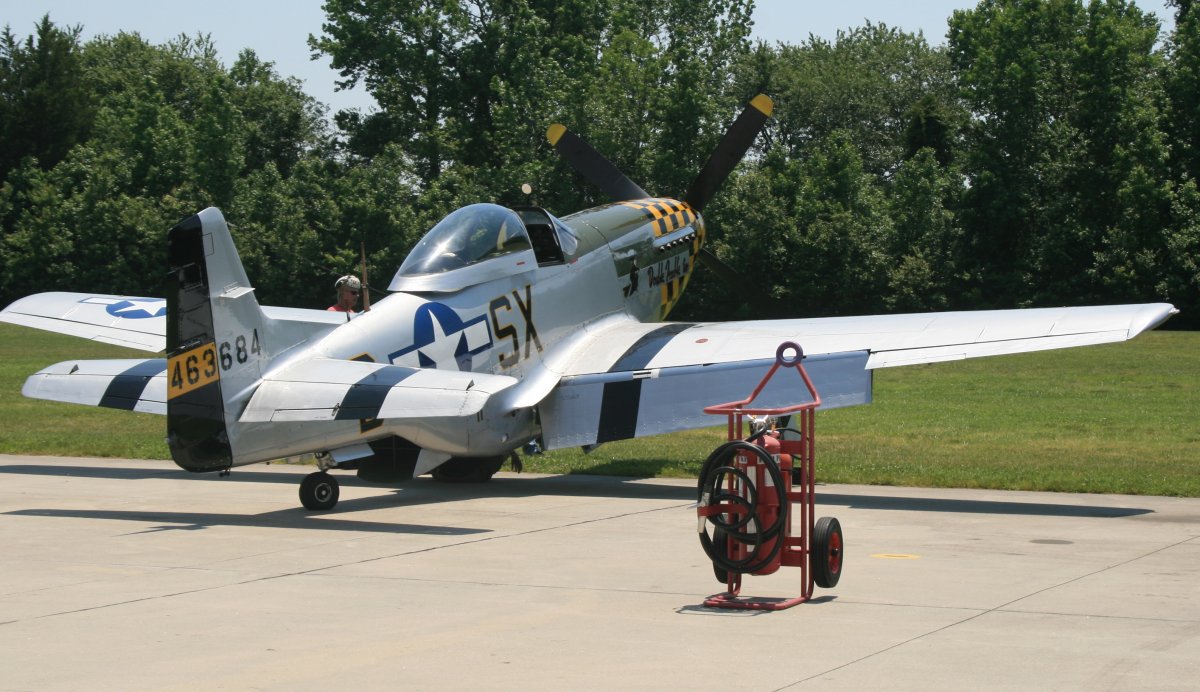 |
|
| The North American P-64, developed in the late-30's as a fighter. Only 13 were ever built and they were used by the Army Air Corps during WWII as an advanced fighter trainer. |
| |
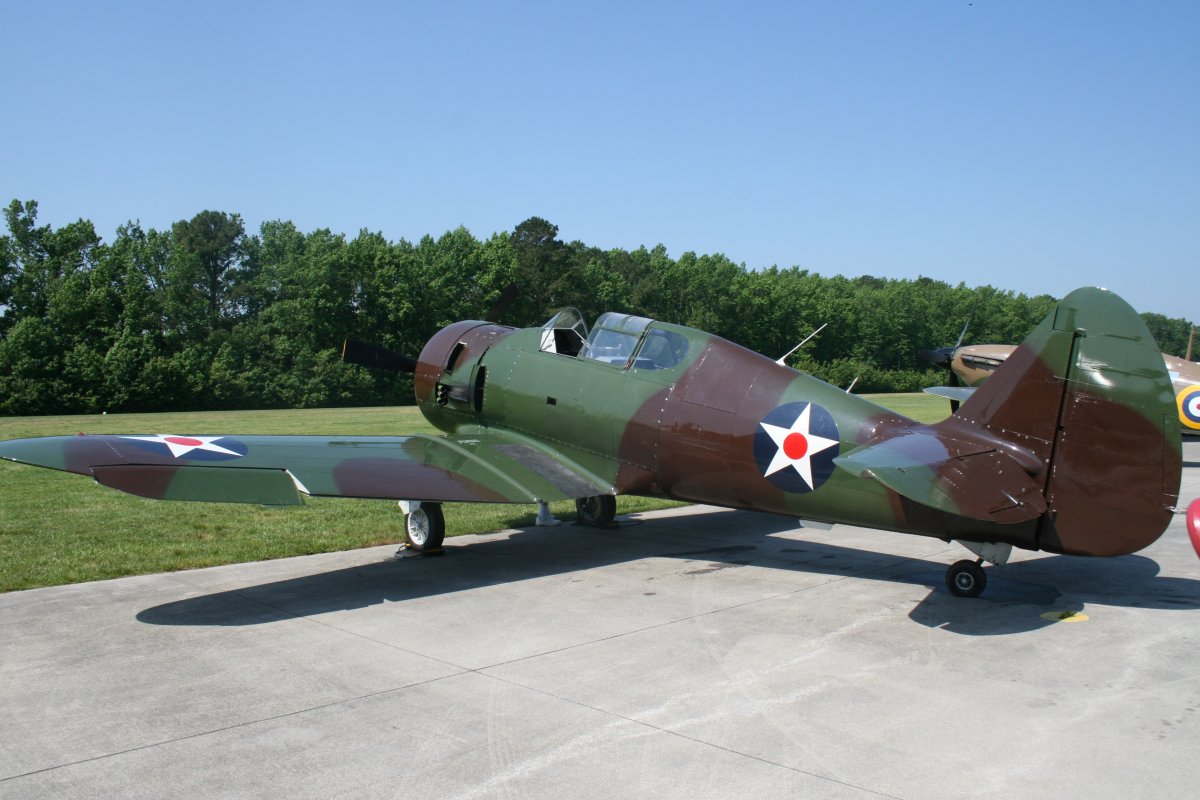 |
|
A colorful Soviet Yak-3. Robust and easy to maintain, it was one of the smallest and lightest major combat fighters fielded by any combatant during the war. Its high power-to-weight ratio gave it excellent performance and it was a a formidable dogfighter. It entered service in the summer of 1944. This Yak-3 is powered by an American V-12 Allison engine. |
| |
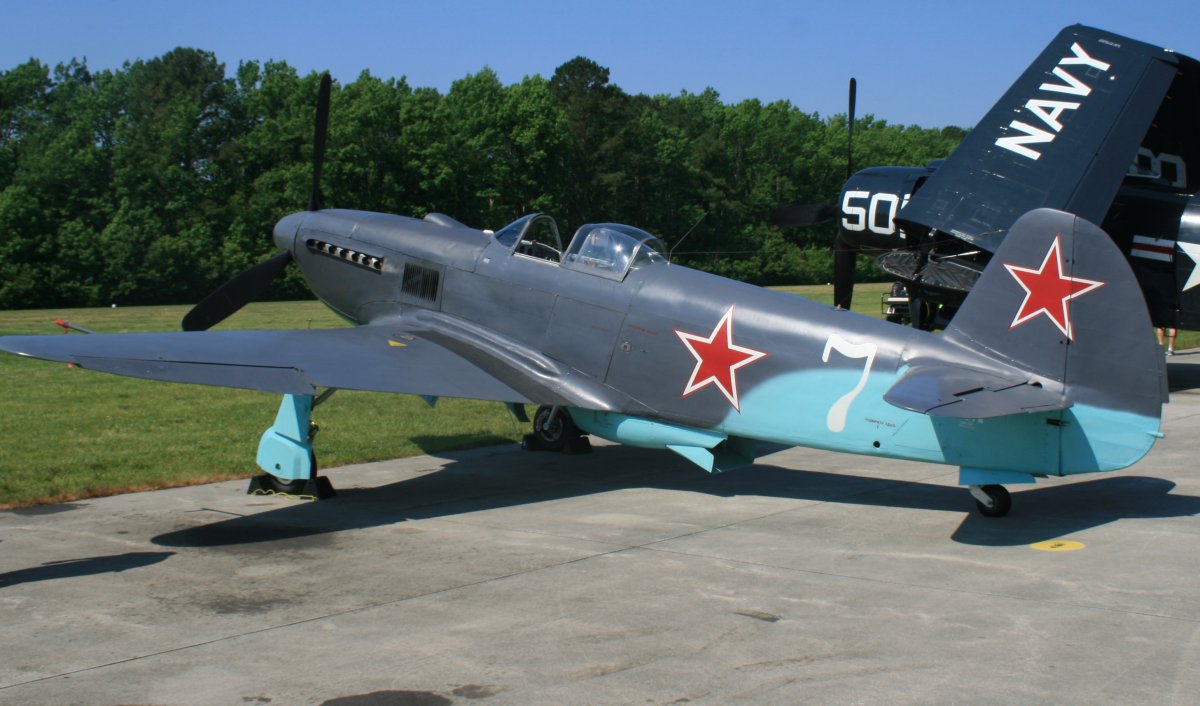 |
|
|
An FM-2 Wildcat. The carrier fighter was designed and originally built by Grumman as the F4F. Grumman switched over to building F6F Hellcats and for the rest of the war General Motors took over building the Wildcats designated FM-2. The Wildcat held its own against the Japanese Zero in the carrier battles and at Guadalcanal. Even after the Hellcats took over on the big Essex-class carriers, the Wildcats performed very useful service flying off Escort Carriers.
|
| |
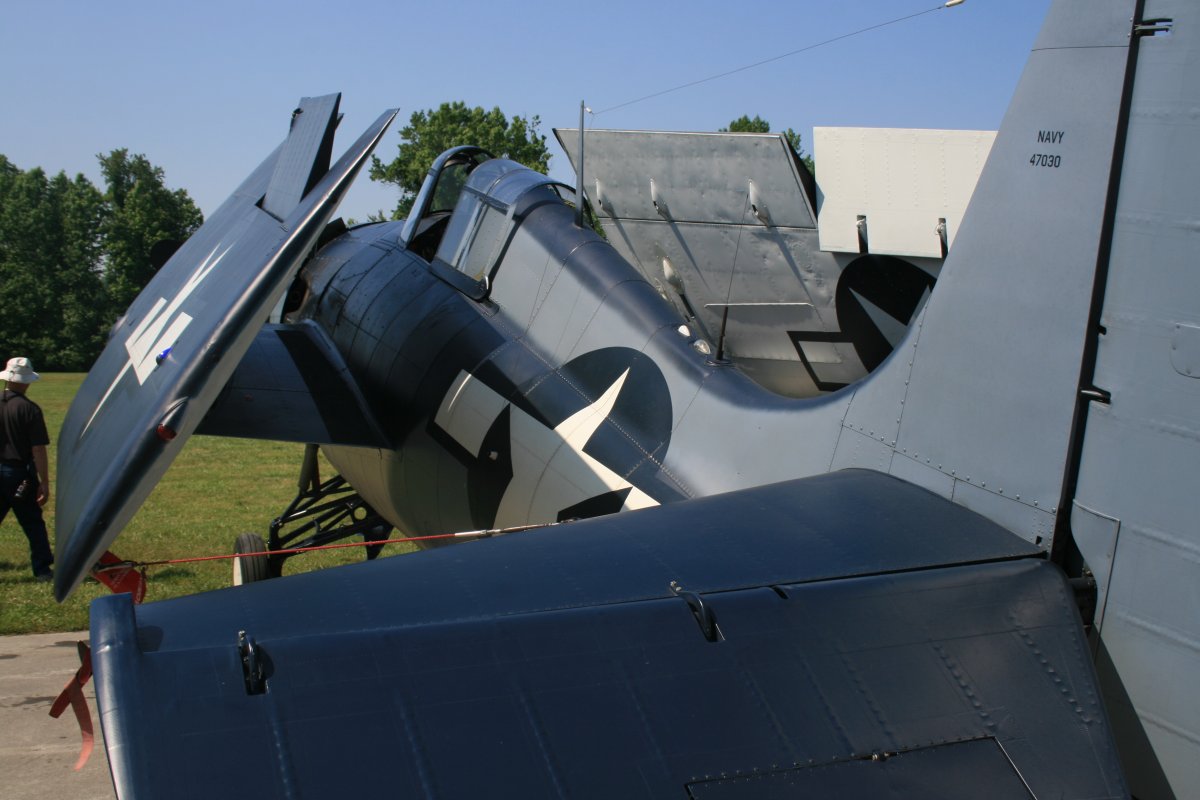 |
|
| A Goodyear FG-1D Corsair. This fighter was designed and originally built by Vought as the F4U. FG-1D was the designation for Corsairs that were license built by Goodyear, to the same specifications as Vought's Corsairs. Early problems with carrier landings allowed it to be eclipsed as the dominant carrier-based fighter by the Grumman F6F Hellcat, powered by the same Double Wasp engine. However, the U.S. Marines used the Corsair very effectively from island airfields. |
| |
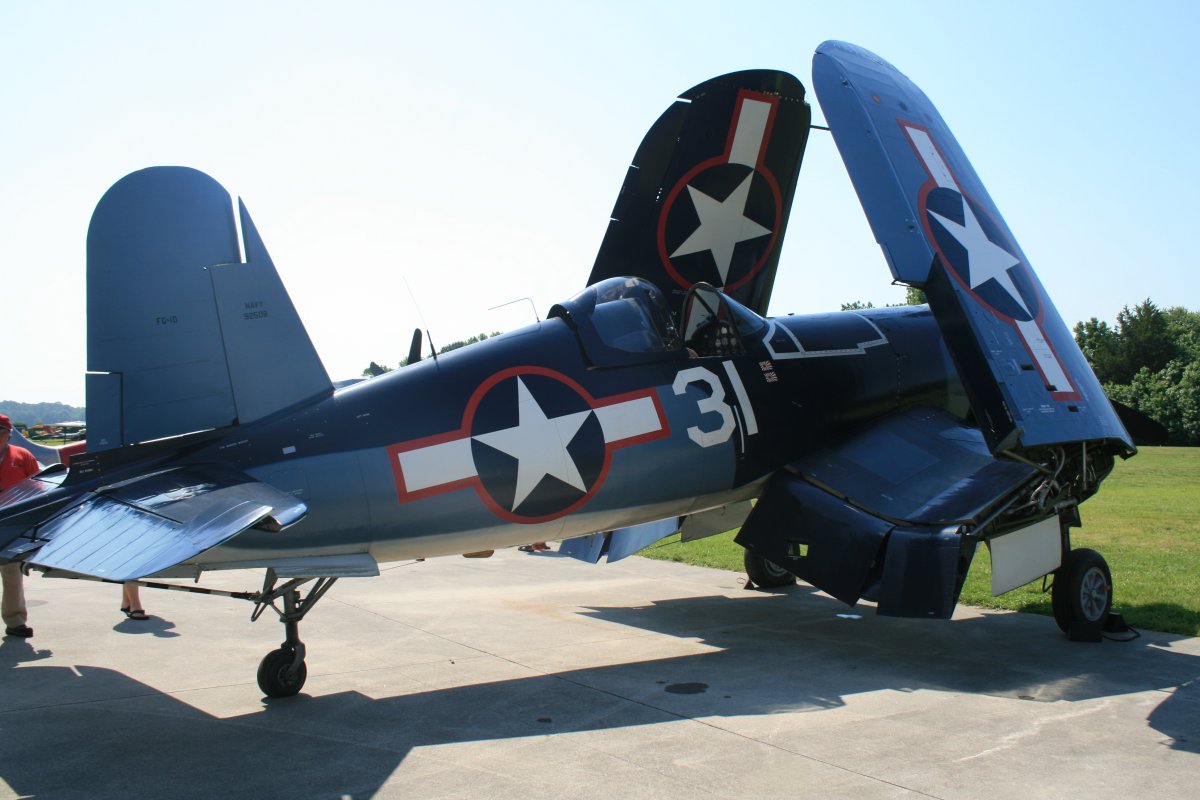 |
|
|
This Focke-Wulf 190 is a replica made by a German company, Flug Werk GmbH. It is powered by a Soviet-manufactured Shvetsov ASh-82 twin-row, 14-cylinder radial, a knockoff of the Wright R-1820 Cyclone.
I don't think I've ever seen a FW-190 at an airshow and I know I've never seen one fly. I've seen a few in museums but they are rare.
|
| |
 |
|
|
The big Douglas AD-1 Skyraider was designed during World War II to meet United States Navy requirements for a carrier-based, single-seat, long-range, high performance dive/torpedo bomber, to follow-on from earlier types such as the Curtiss SB2C Helldiver and Grumman TBF Avenger. Althought it first flew near the end of World War II, it didn't see service until the Korea and Vietnam wars where it was very effective.
|
| |
 |
|
|
Fairchild PT-19 Trainer
|
| |
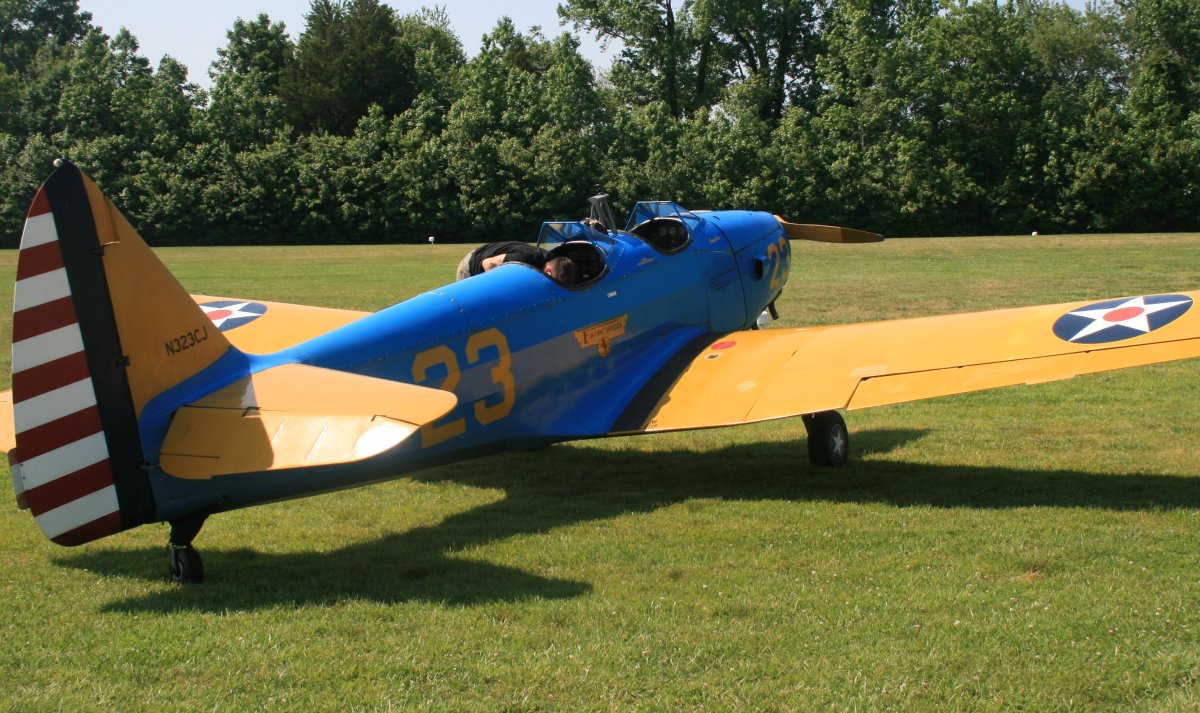 |
|
| An NE-1, the Navy's version of the vernerable Piper J-3 Cub. |
| |
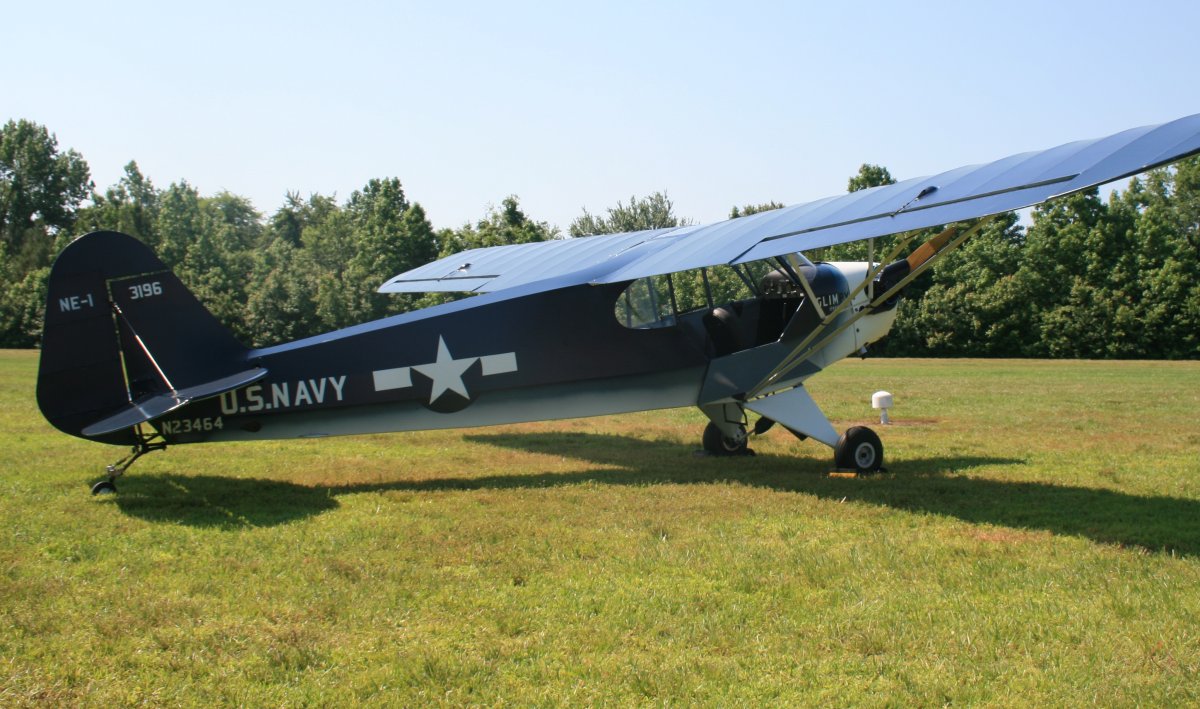 |
|
| Messerschmidt BF-108 Taifun Utility/Trainer. Two seater - side by side. |
| |
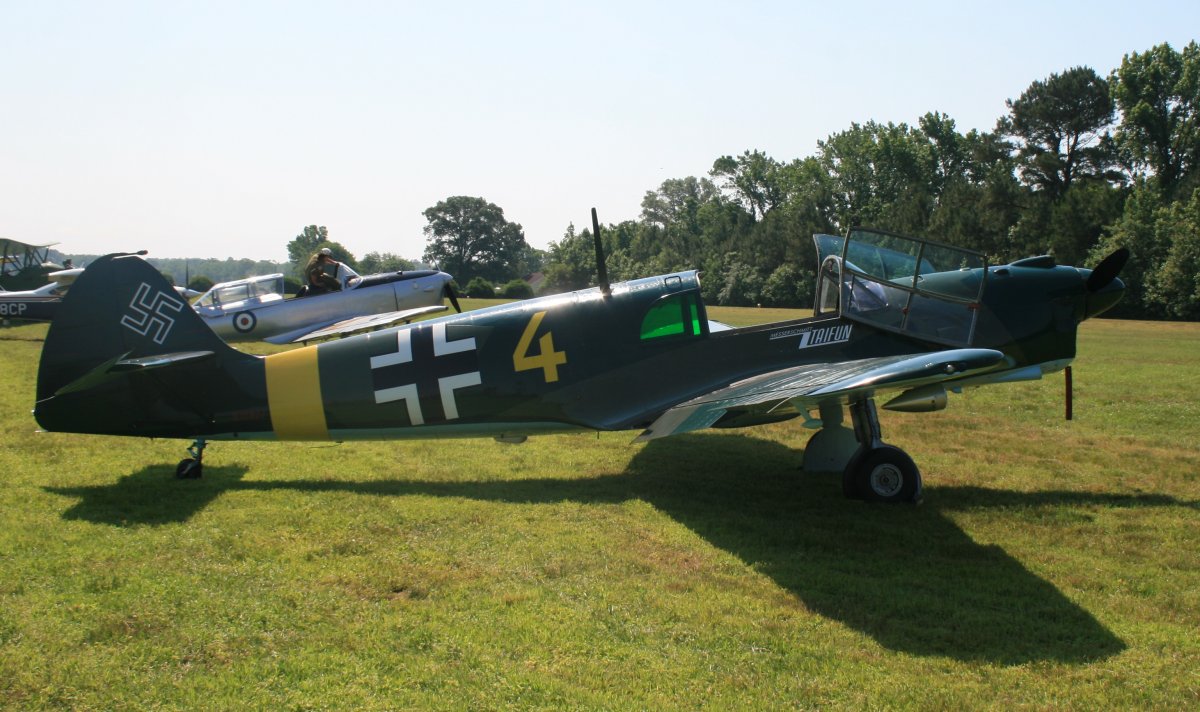 |
|
| Polikarpov PO-2 "Mule", a Soviet biplane that is on the list of top ten aircraft produced. It served many roles in the war: trainer, low-cost ground attack, aerial reconnaissance, psychological warfare and liaison. In World War II, the Germans called it the "Sewing Machine". The tail looks sort of like the WWI German DR-7. |
| |
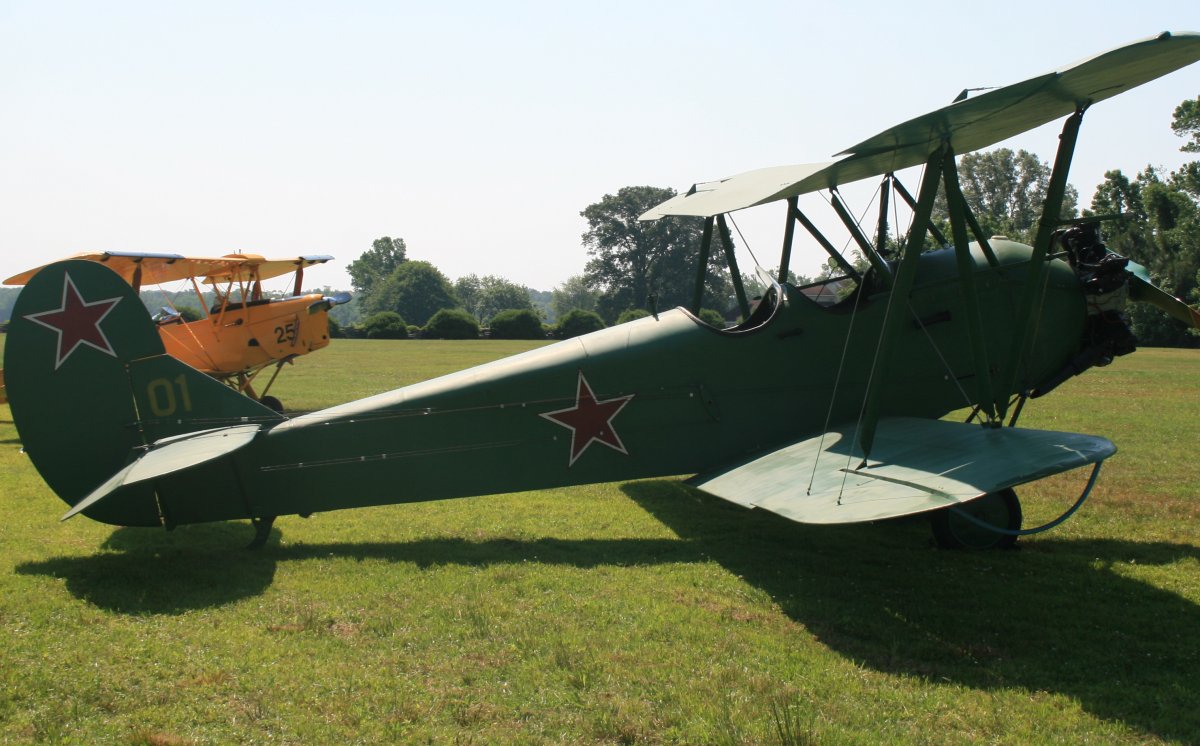 |
|
|
|
| |
 |
|
|
|
| |
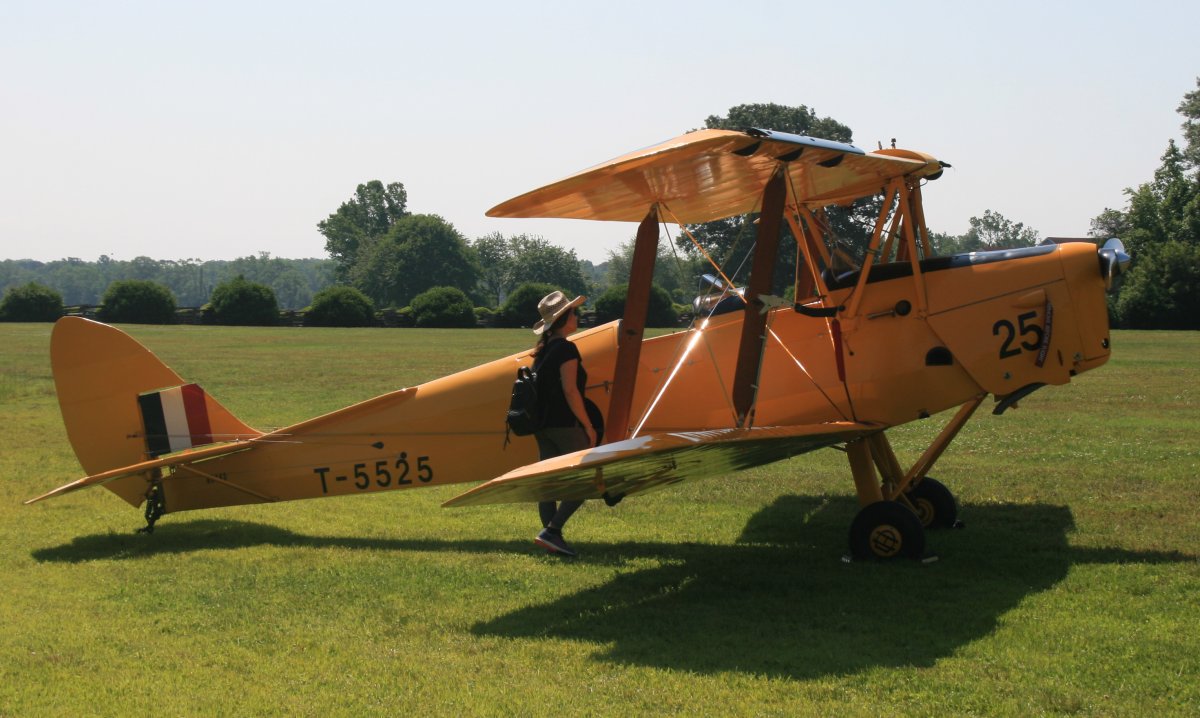 |
|
|
De Havilland Canada DHC-1 Chipmunk -- not to be confused with the Super Chipmunk. AThe Chipmunk replaced the Tiger Moth as primary trainer.
|
| |
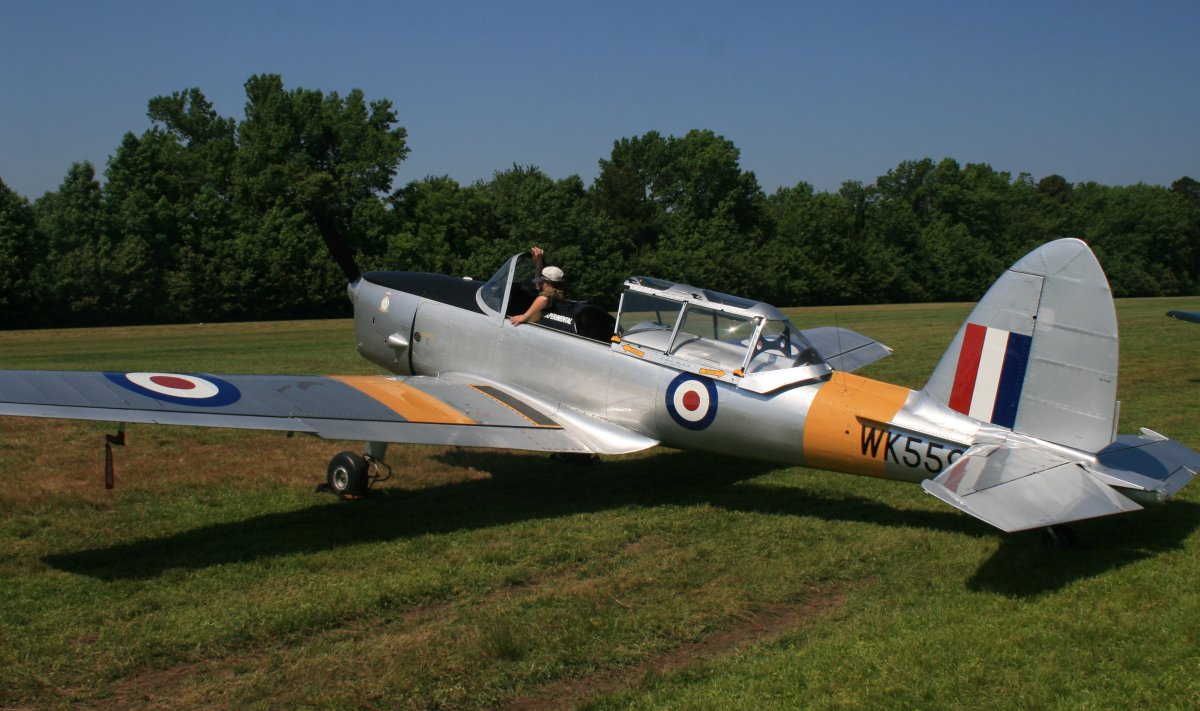 |
|
Fieseler Storch, famous for its excellent STOL performance and low stall speed of 31 mph. I've never seen one fly and didn't today, not sure why.
|
| |
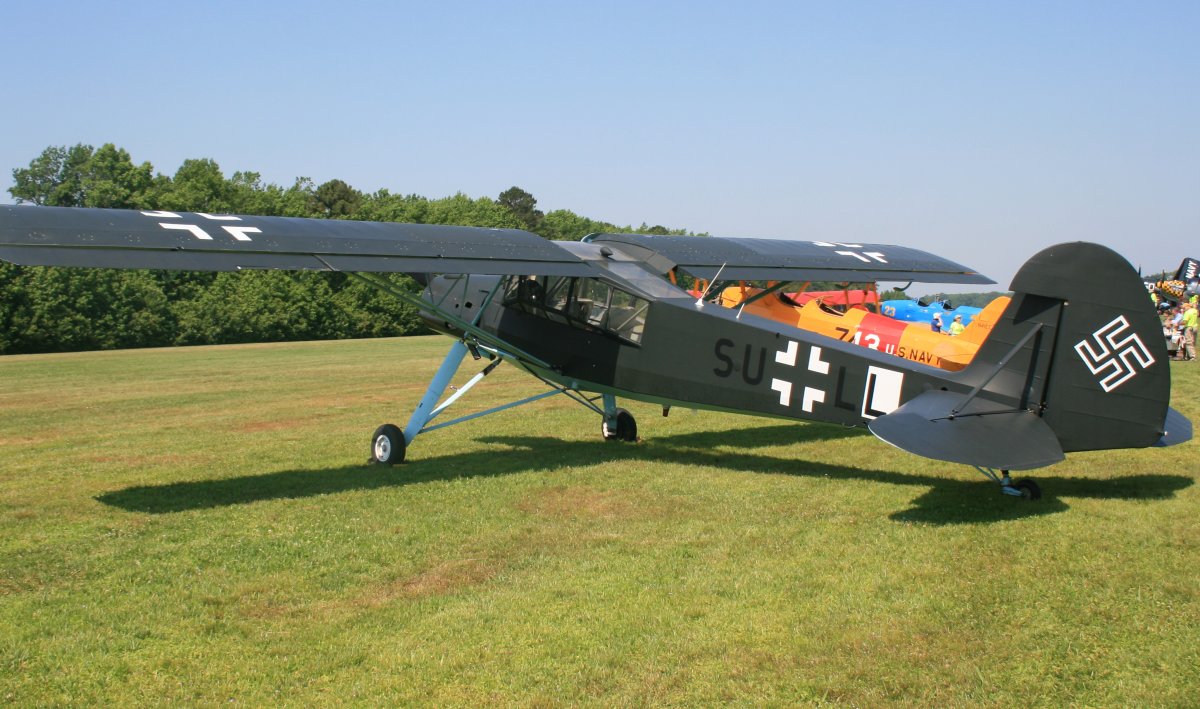 |
|
| The Boeing P-26D Pea Shooter, a U.S. fighter during the 1930's. A very colorful plane! |
| |
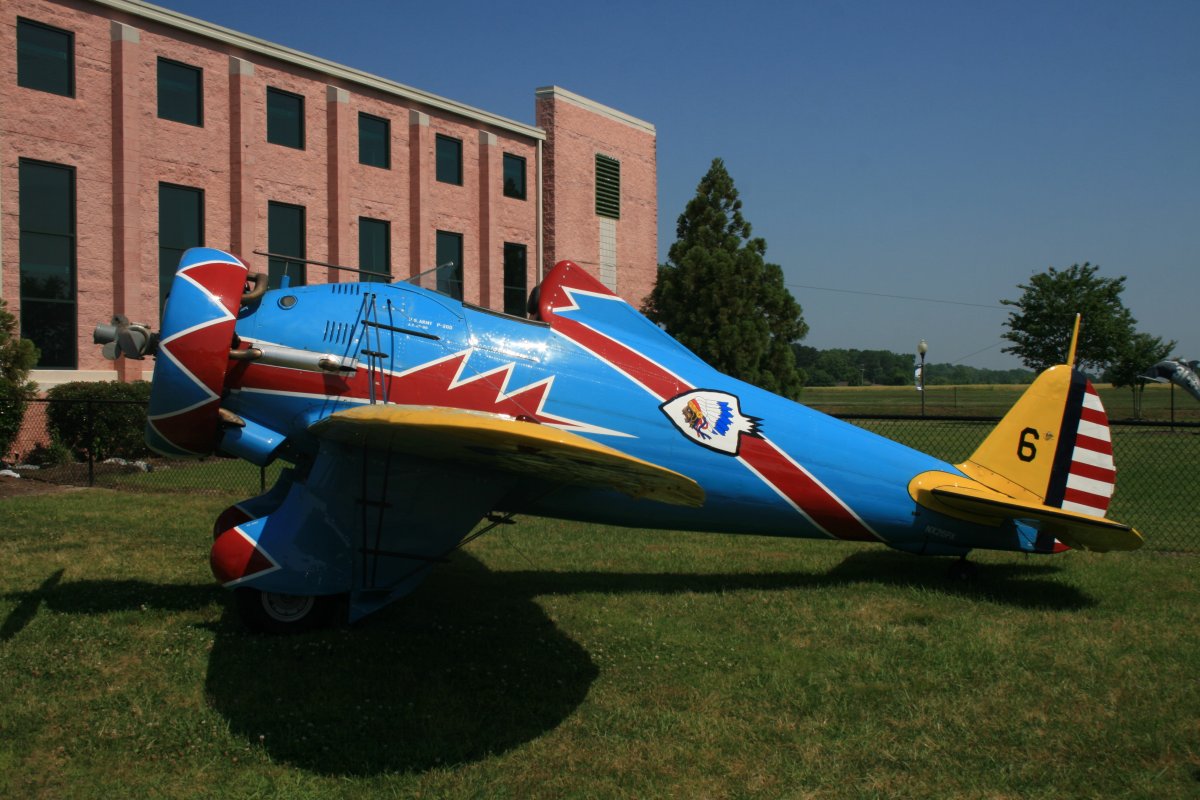 |
|
| N2S Navy Stearman on floats. One of these hung from the ceiling in Dahlgren Hall at the U.S. Naval Academy for many years; now it is the Udvar-Hazy National Air and Space Museum. |
| |
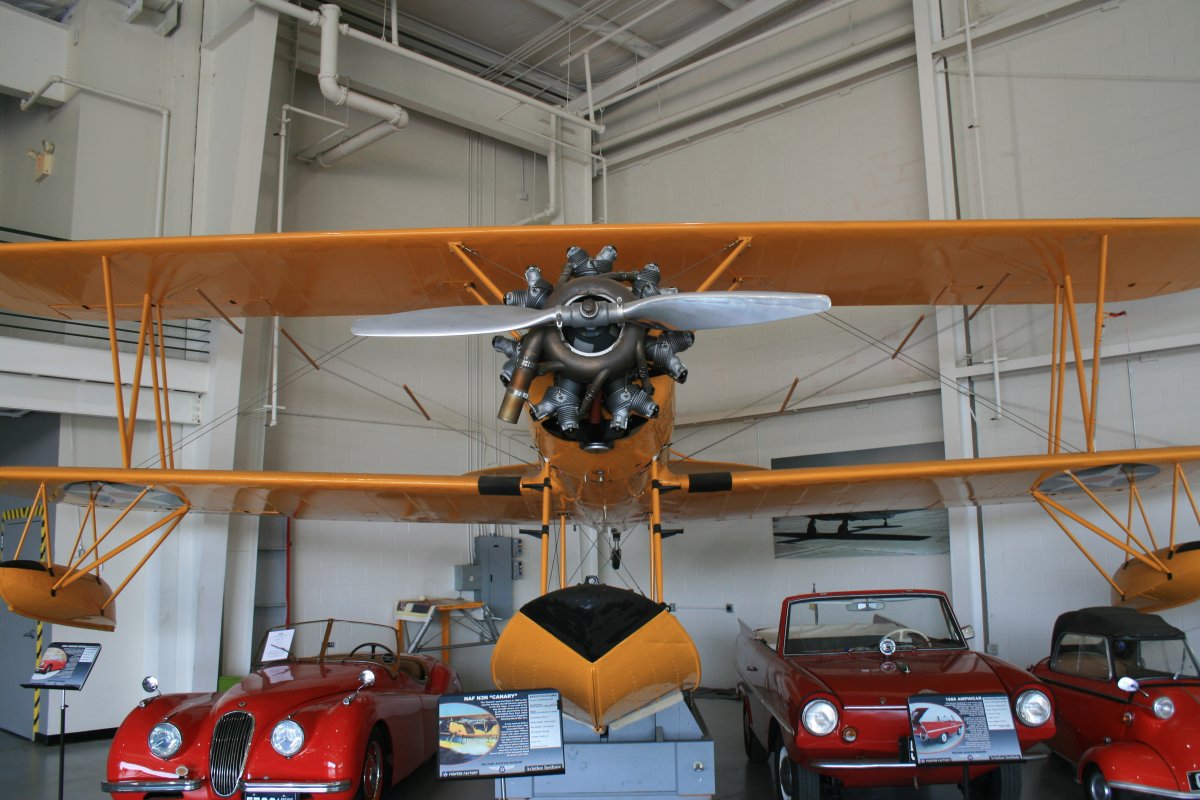 |
|
| In one of the hangars was an exhibit by a radio control club. |
| |
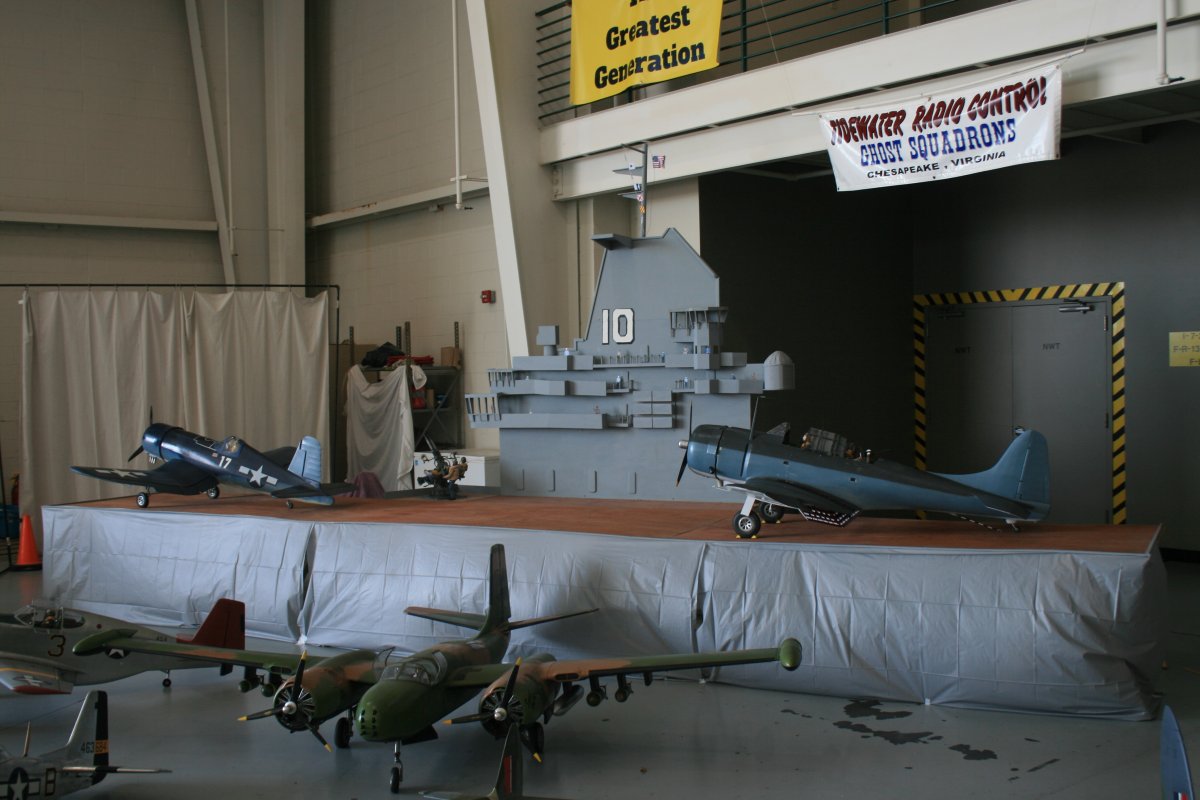 |
|
|
German aircraft: Me-109 and Stukas
|
| |
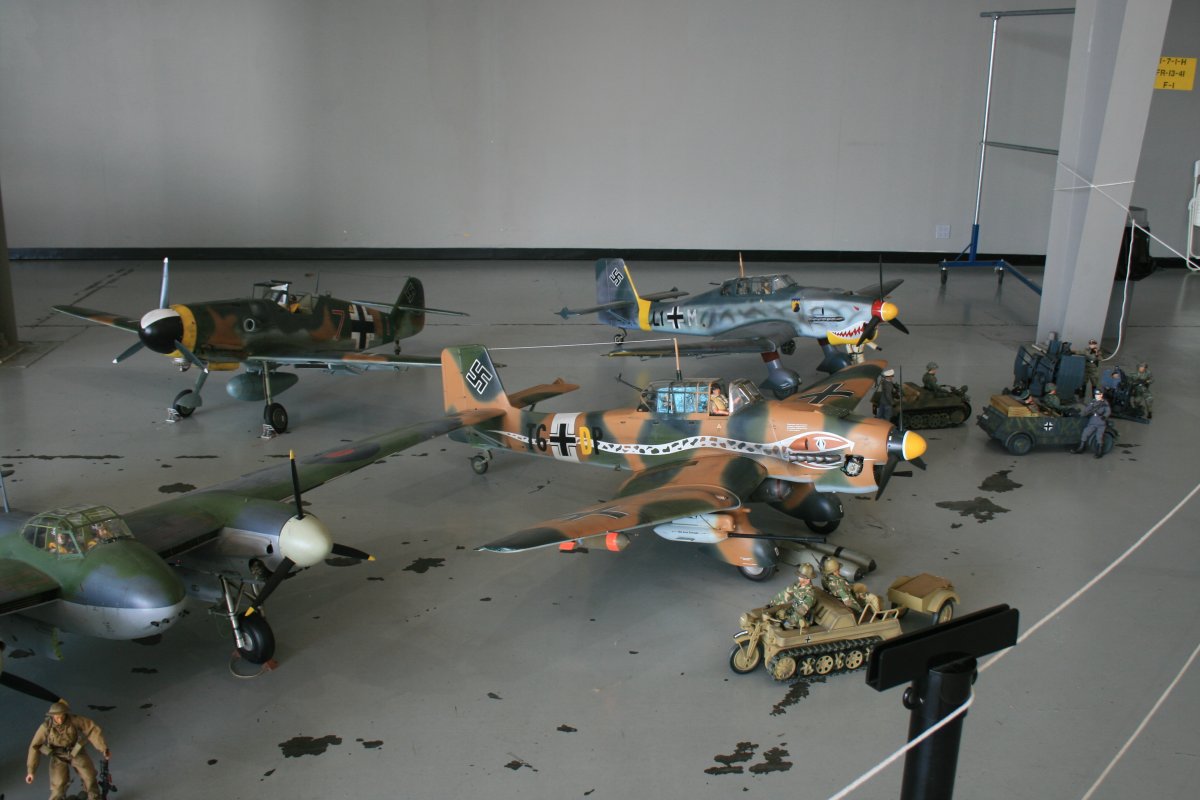 |
|
| American fighters: P-47 Thunderbolts and P-51 Mustang |
| |
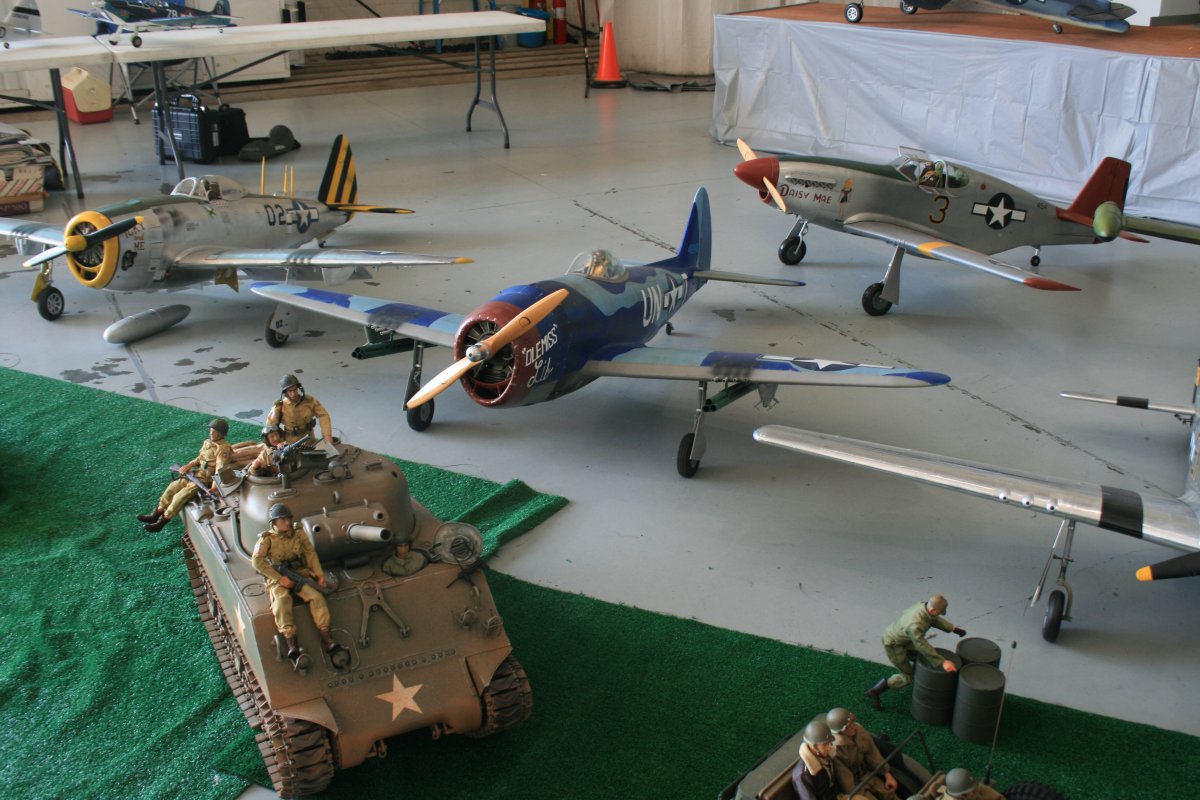 |
|
| Another hangar had live entertainment. Pictured here are "America's Sweethearts" who sang great. It was very pleasant to sit in the comfortable chair in the shaded hangar listening to the music. But I didn't stay long. I had planes to see, places to go! |
| |
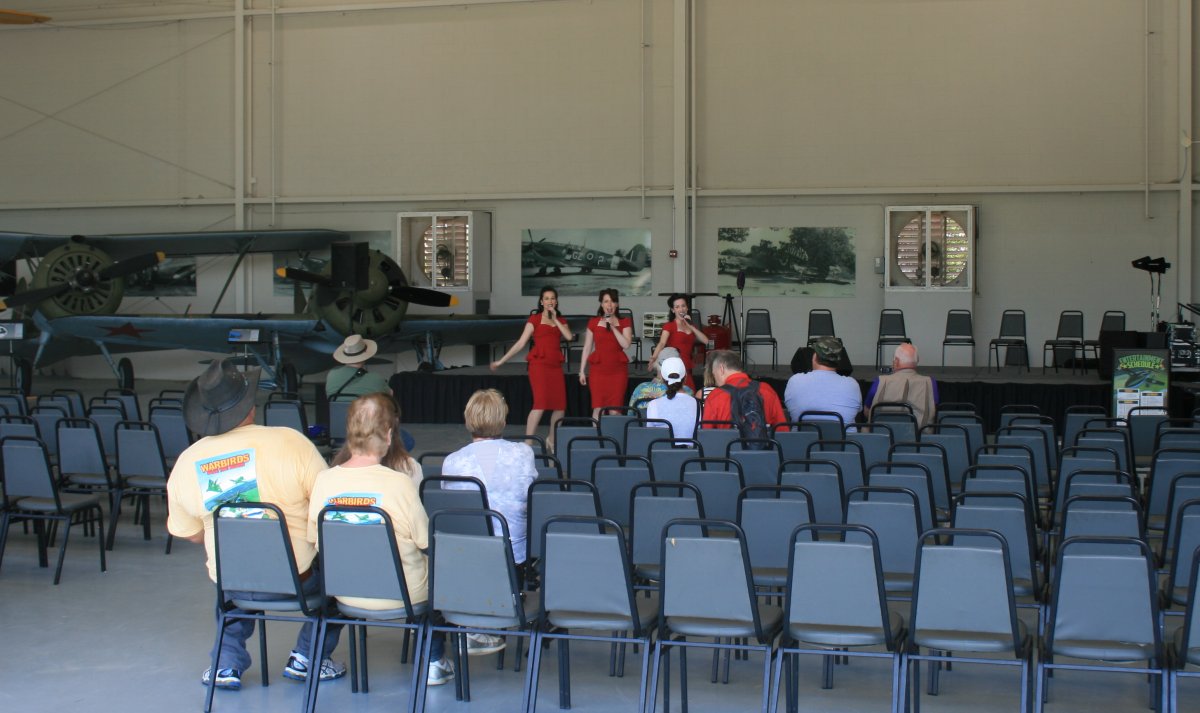 |
|
| He's hard to see but Frank Cubillo is singing on the other side of those chairs. He was excellent. Great voice. Somewhere between Frank Sinatra and Dean Martin. |
| |
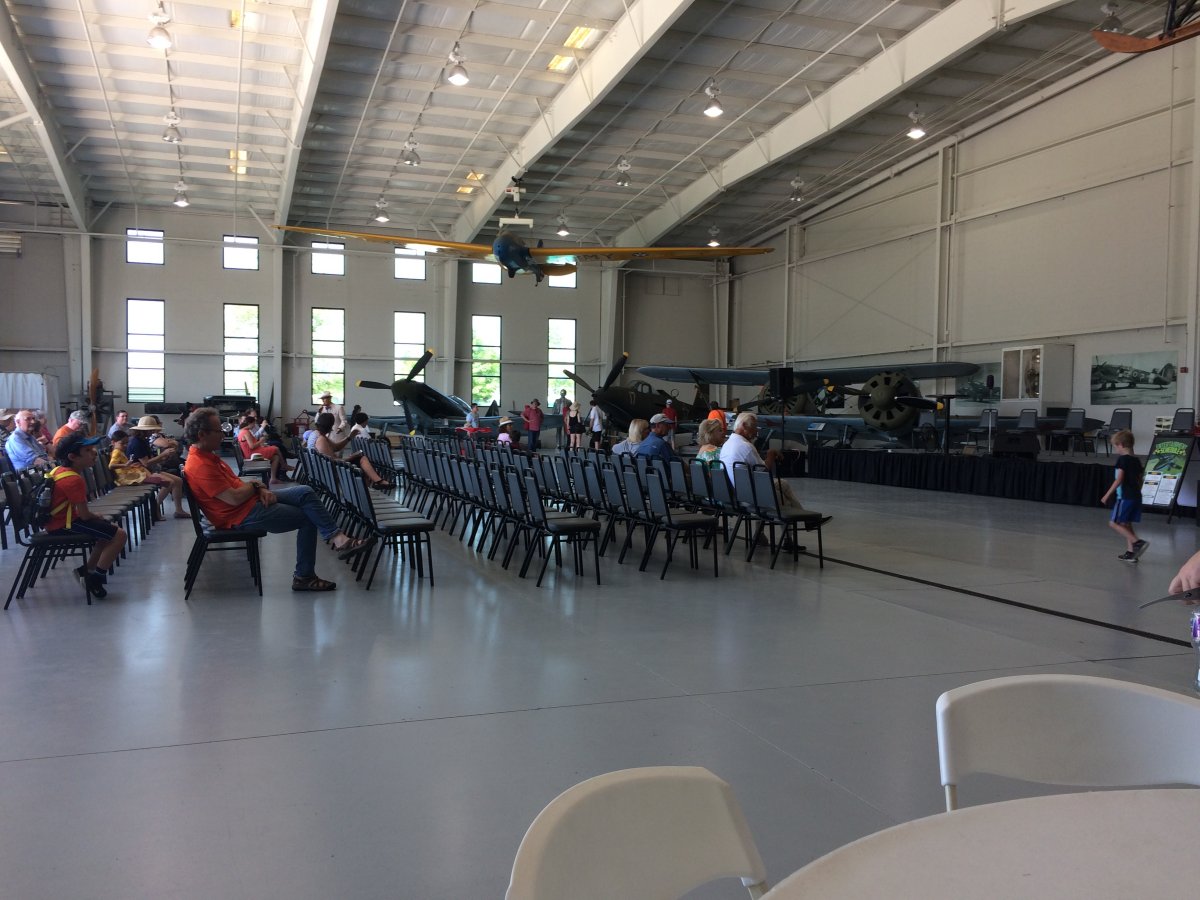 |
|
|
Walking outside over by the hangars. An early model Twin Beach "Bug Smasher".
|
| |
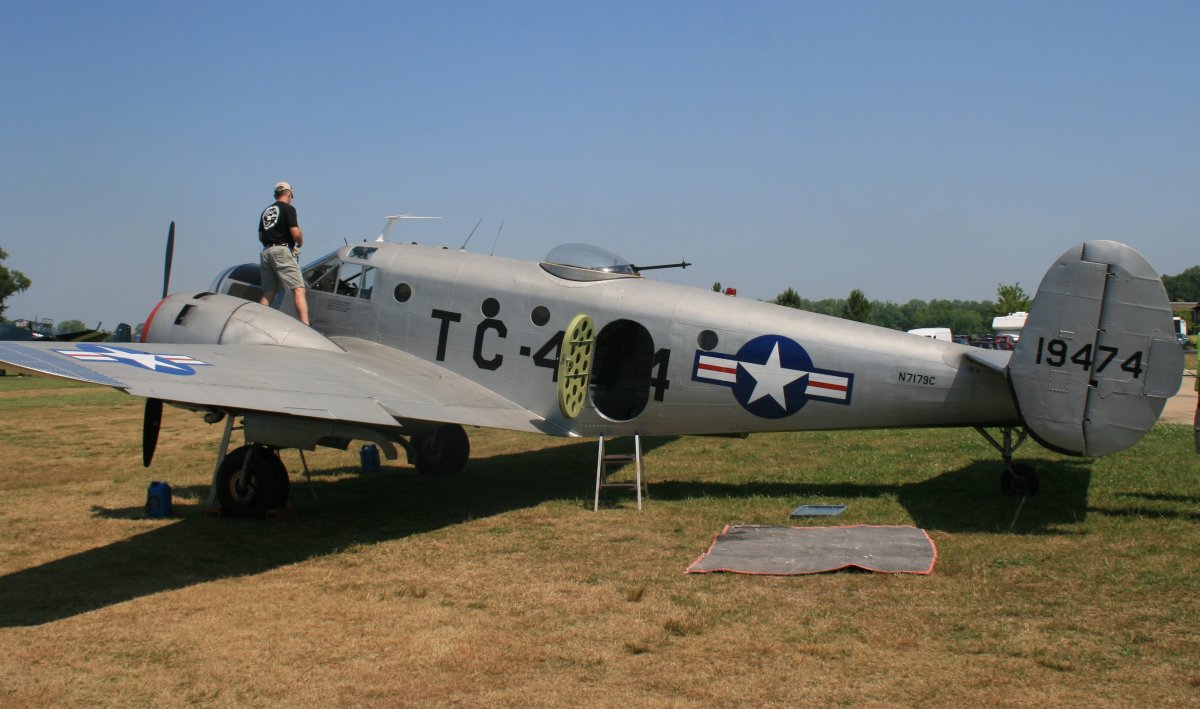 |
|
|
Left to right: PBY Catalina, TBM Avenger and JU-52.
|
| |
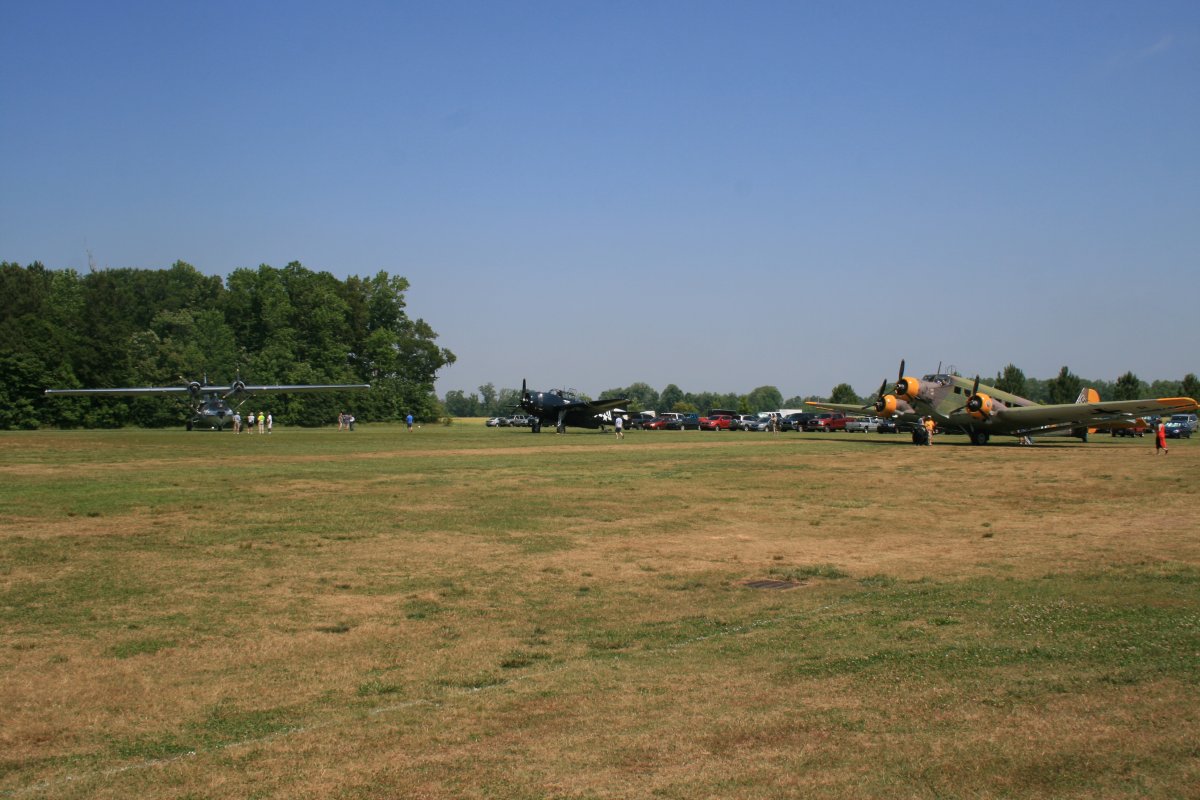 |
|
| This De Havilland DH-98 Mosquito is one of only four flying Mosquitos in the world. |
| |
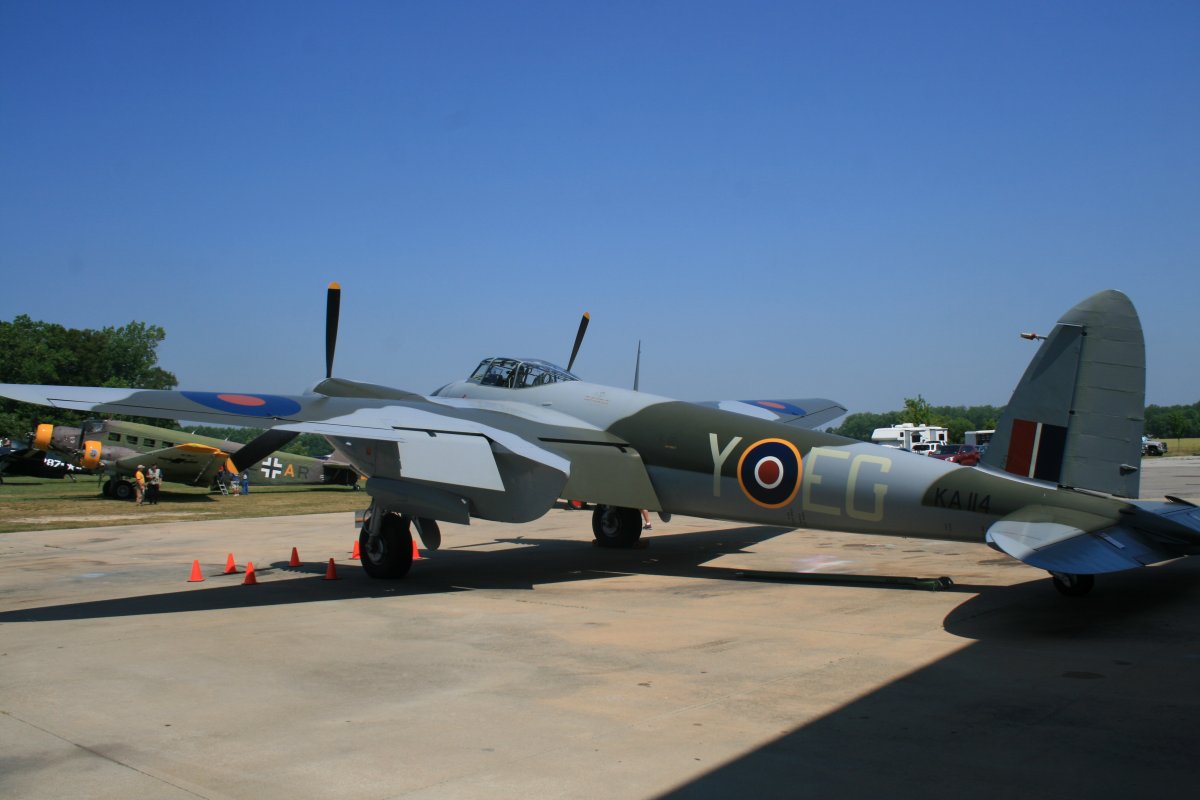 |
|
| The Mosquito was built entirely out of wood so it was relatively light weight. With two powerful Merlin engines, it was very fast, and very versatile. Among its many roles were low to medium-altitude daytime tactical bomber, high-altitude night bomber, pathfinder, day or night fighter, fighter-bomber, intruder, and maritime strike aircraft. |
| |
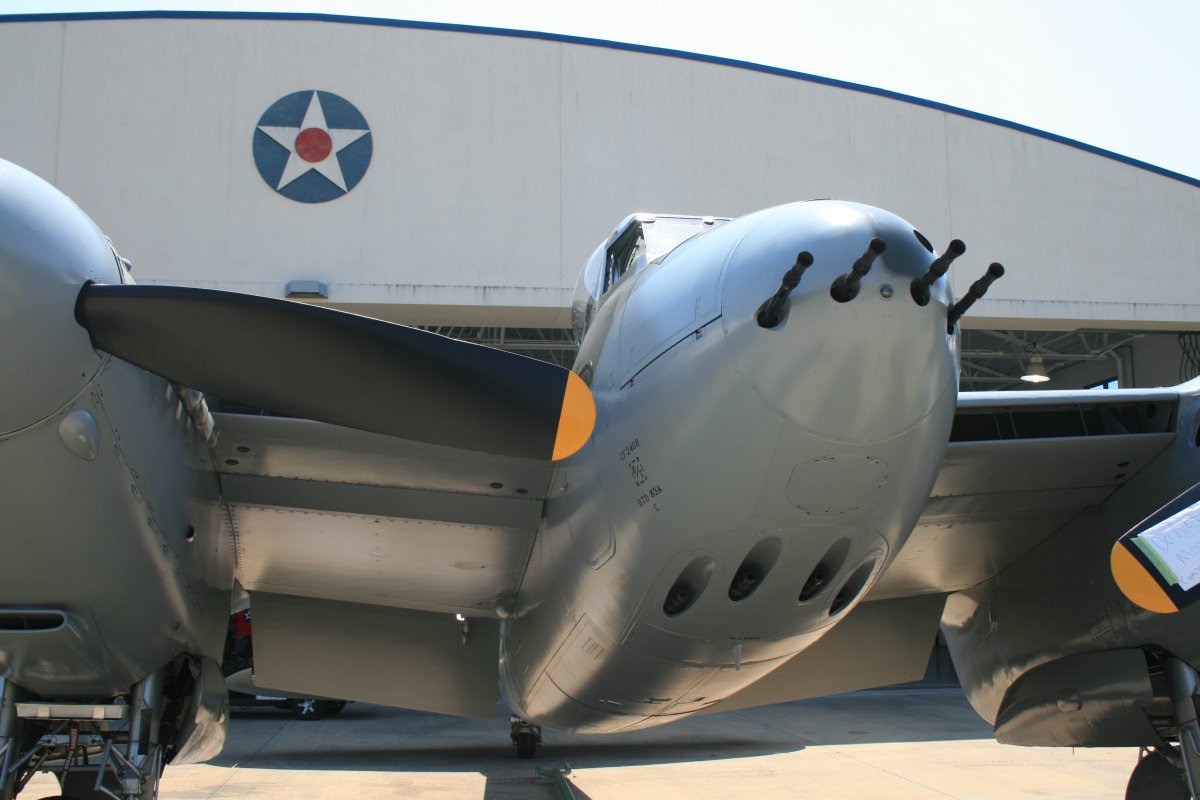 |
|
| I was looking forward to seeing the Mosquito fly since I had never seen one fly before, but alas, it had a mechanic issue and did not fly. |
| |
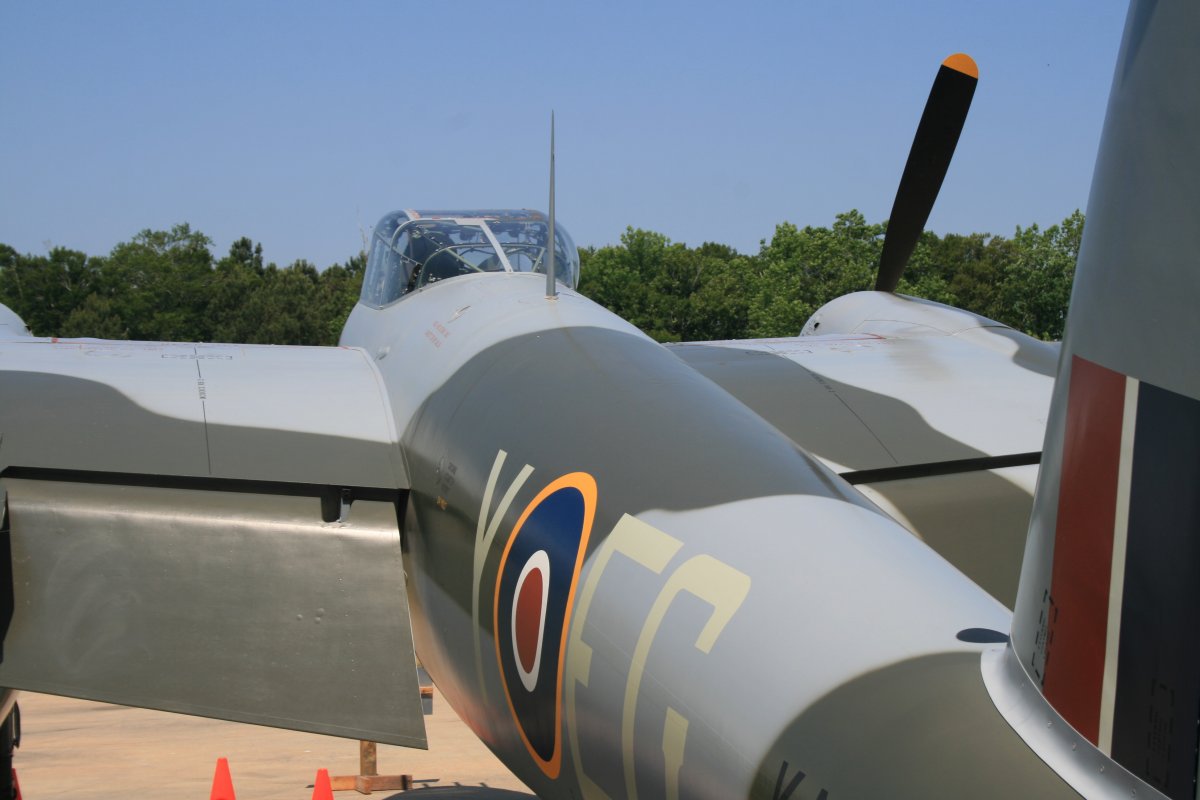 |
|
| A colorful Focke-Wulf FW-44J which was a German trainer and sport aircraft in the 1930 and most German pilots trained in it during World War II. |
| |
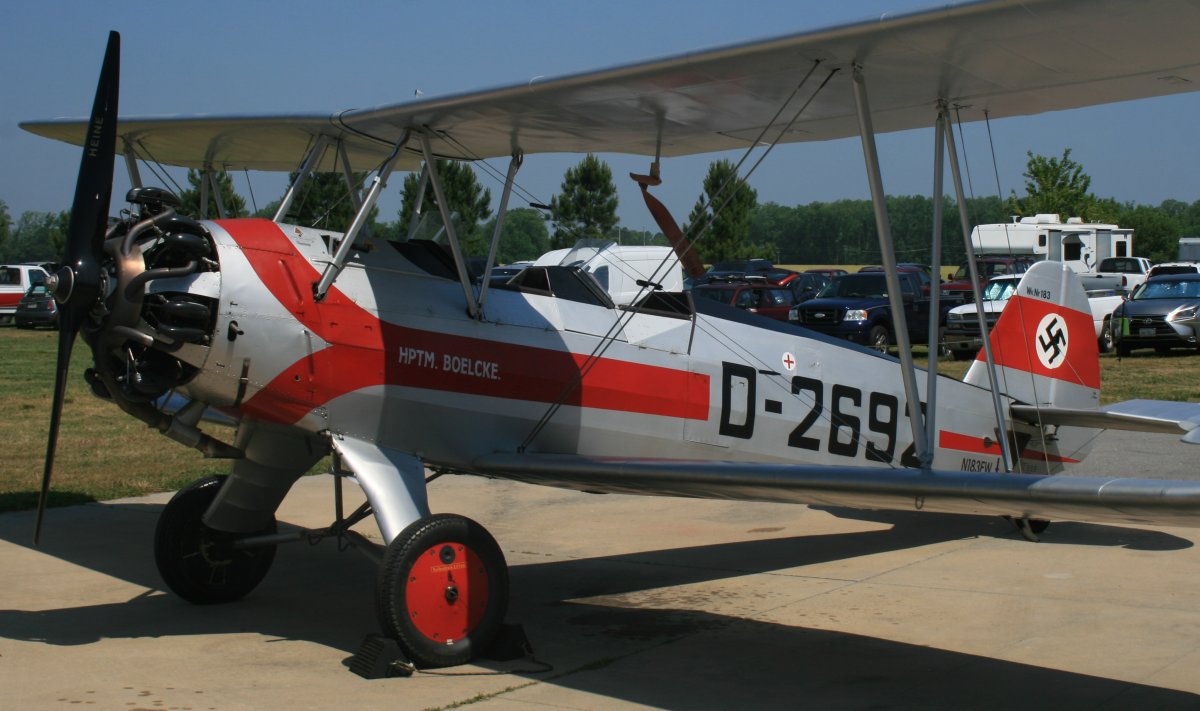 |
|
| This is the actual Control Tower from a U.S. Army Air Corps base in Goxhill, England in World War II. It was dismantled, shipped to America, and reassembled here in Virginia Beach. USAAF Station #345-Goxhill was the base where fighter units new to England received 60-90 days of advanced training on flying in England before going to their operational airfields, and combat. |
| |
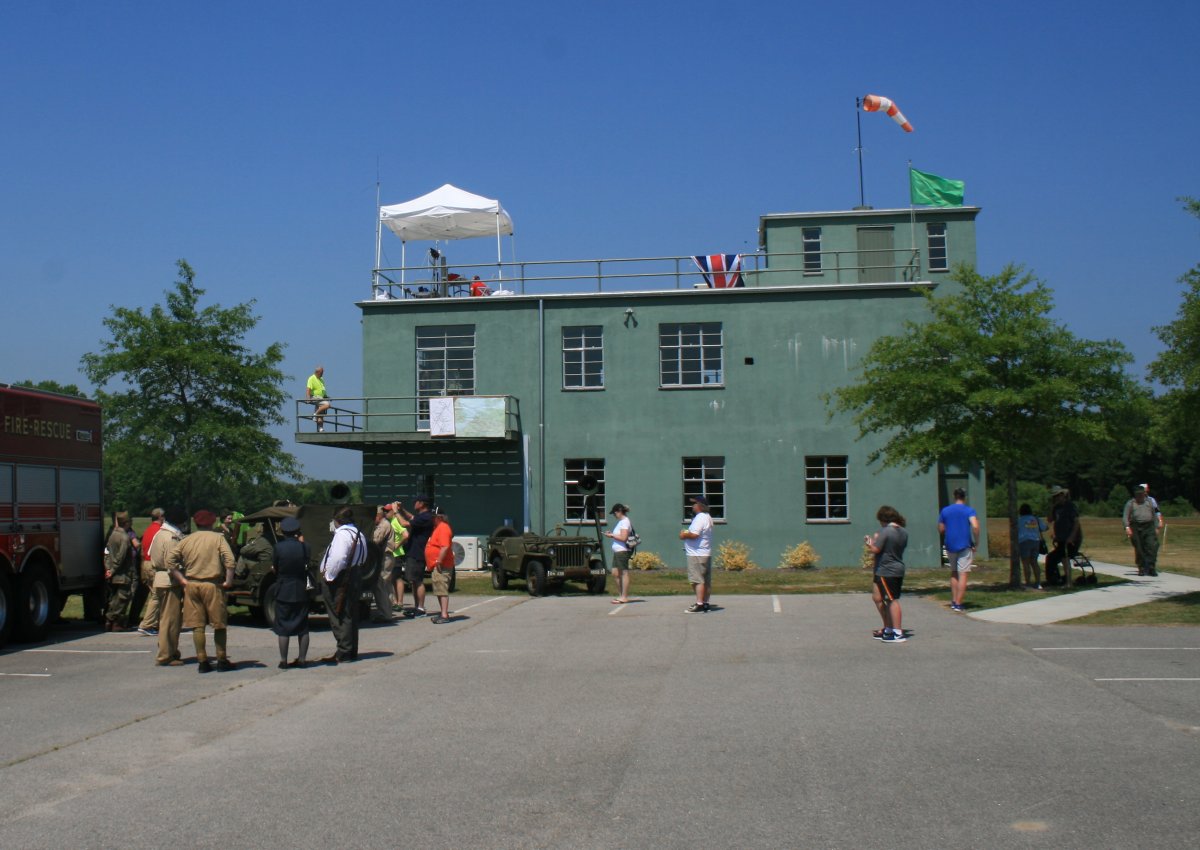 |
|
|
The Control Tower from another view. My RV-7 is visible across the field at the base of the trees.
|
| |
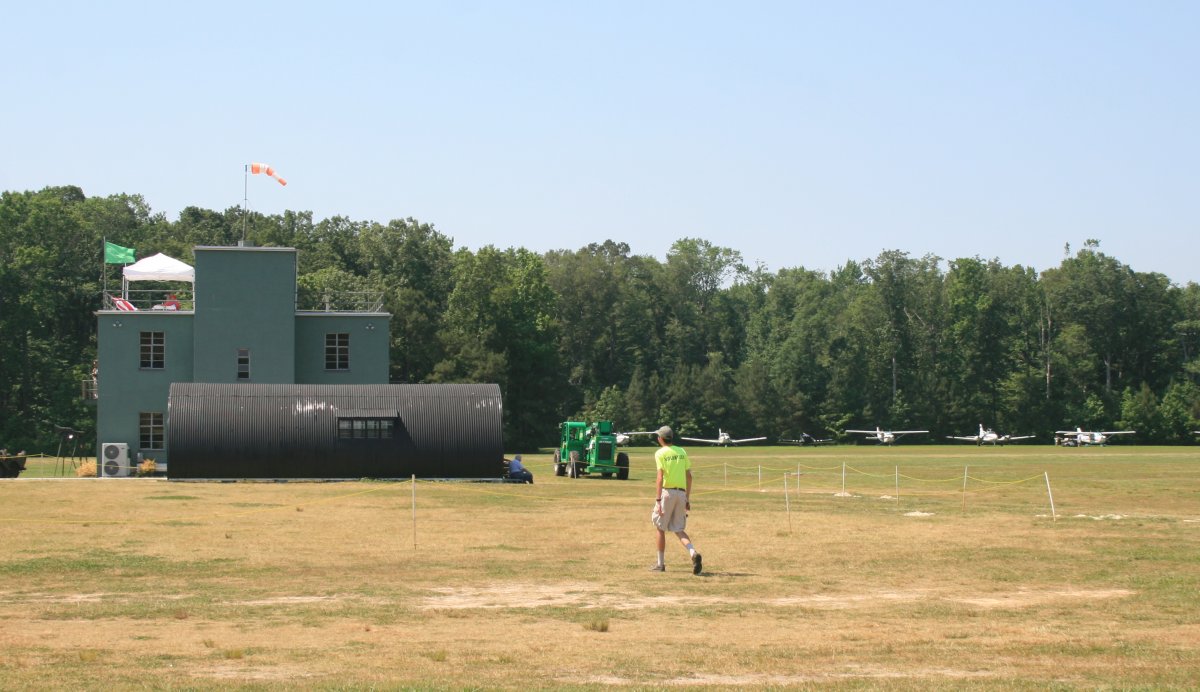 |
|
| This JU-52 "Auntie Ju" was probably the most interesting plane I saw today. The JU-52 was to the German Luftwaffe what the C-47 was to the Allies: a versatile, troop and cargo transport. |
| |
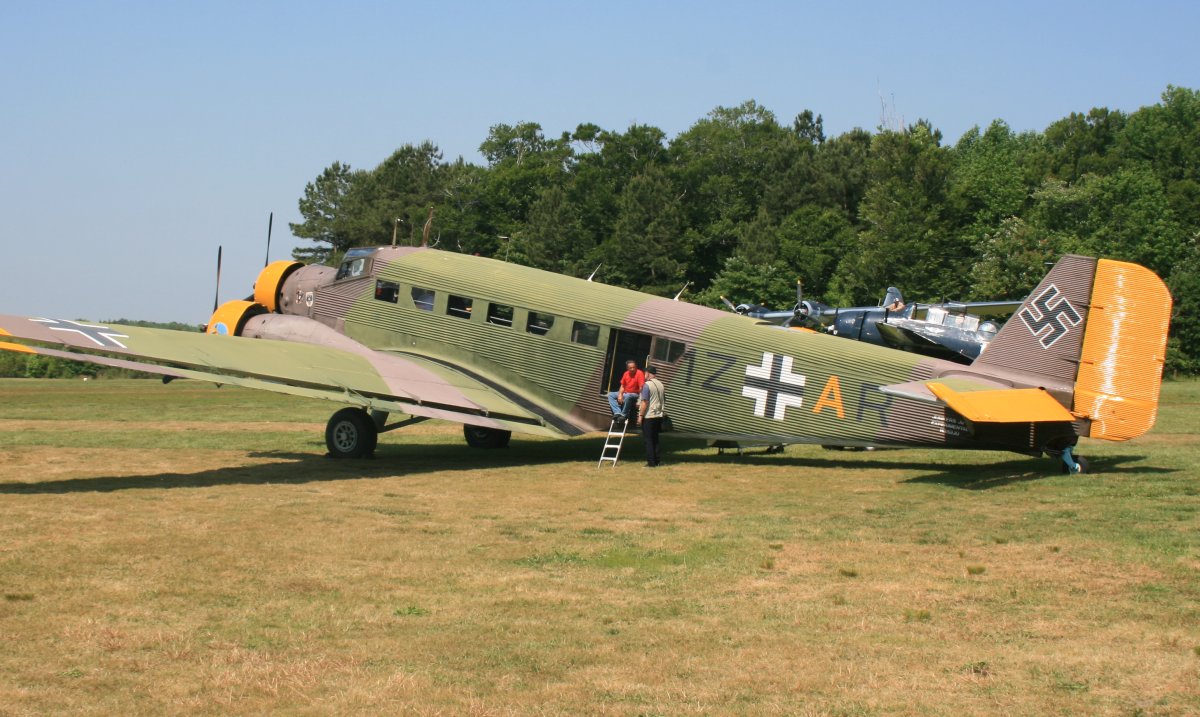 |
|
|
The corrugated aluminum skin made the aircraft strong.
The JU-52 was famous for its participation in the German airborne invastion of Crete and the supply airlift to Stalingrad, which failed. Many JU-52s were lost in these two battles.
|
| |
 |
|
|
Even with the three engines, the JU-52 was slower and could carry less troops than its allied equivalent: the C-47.
|
| |
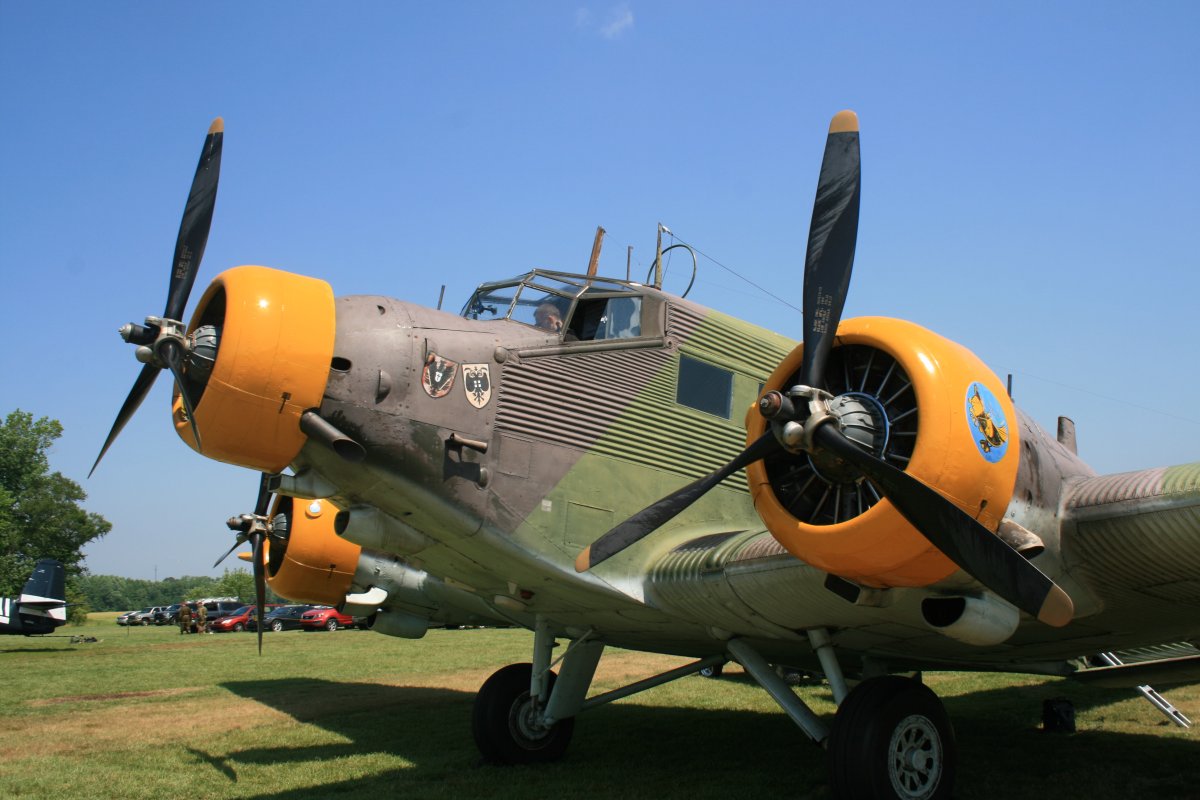 |
|
| Hey, there's Doris Mae, the TBM Avenger. I just saw her two weeks ago at Culpepper. |
| |
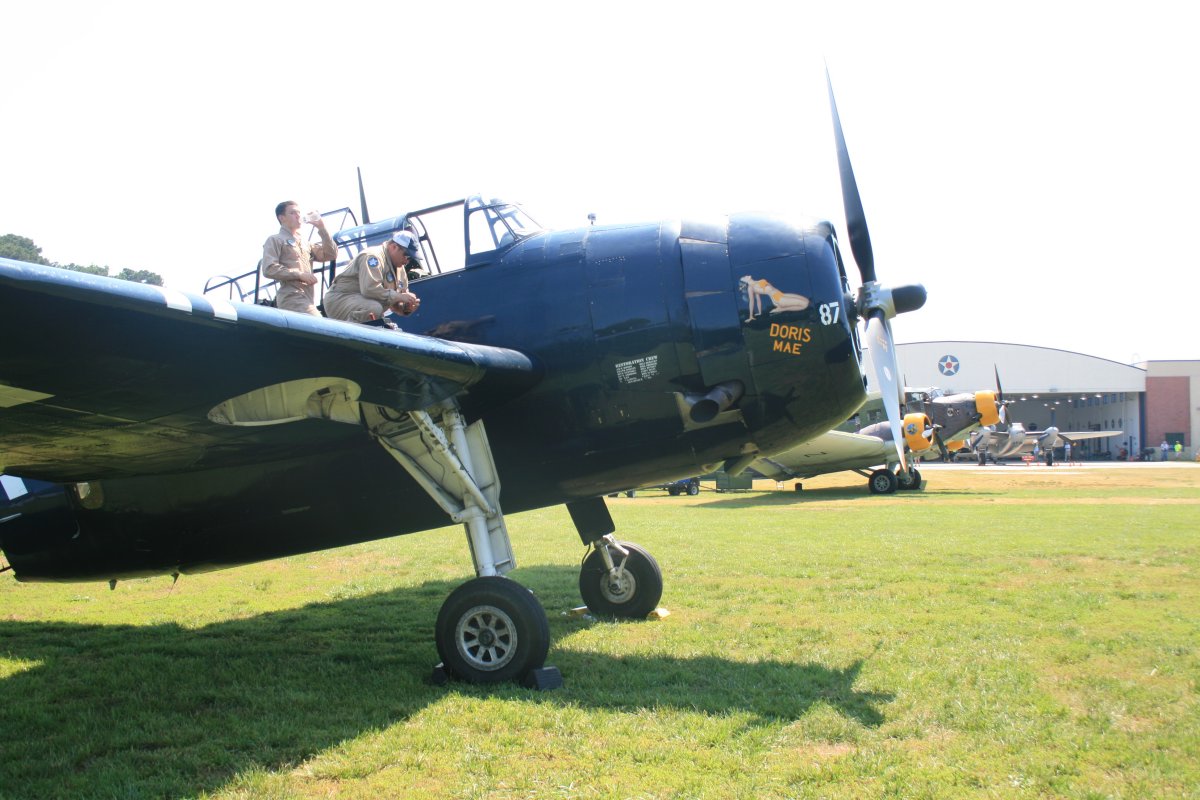 |
|
Consolidated PBY Catalina. One of the most widely used seaplanes of World War II. Catalinas served with every branch of the United States Armed Forces and in the air forces and navies of many other nations. During World War II, PBYs were used in anti-submarine warfare, patrol bombing, convoy escort, search and rescue missions (especially air-sea rescue), and cargo transport. A Catalina famously found the German battleship Bismarck in the Atlantic Ocean, enabling the British to eventually sink her. |
| |
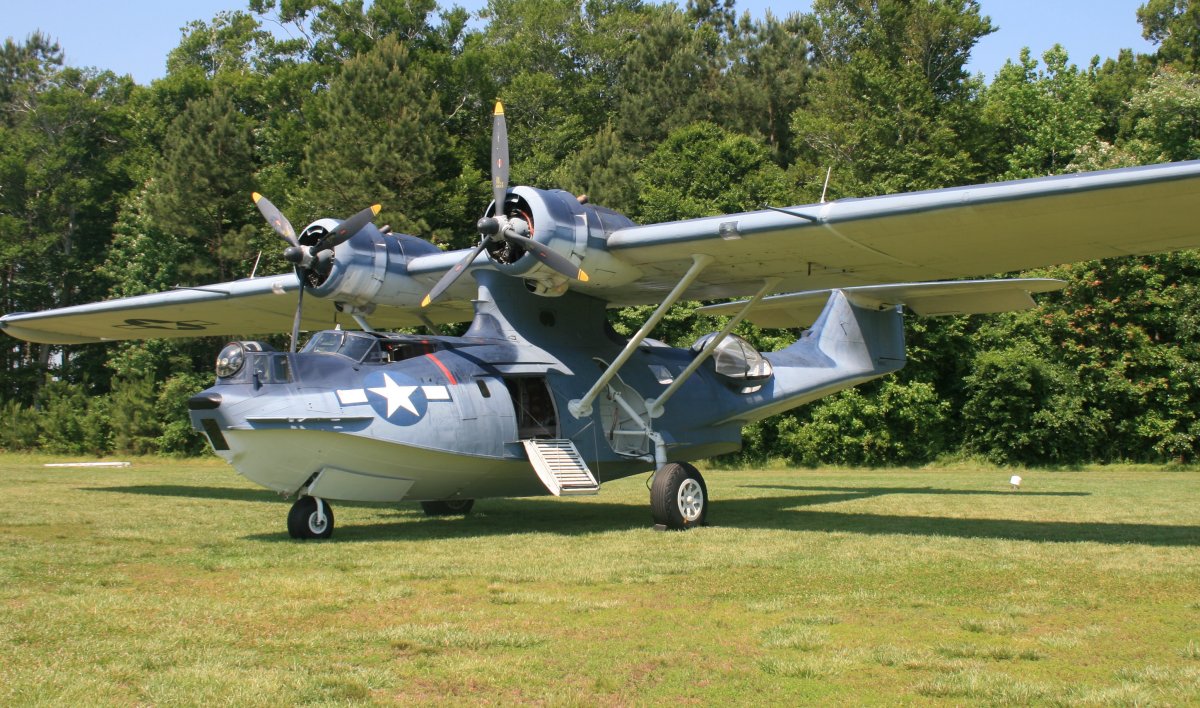 |
|
| I've never seen one of these fly. I thought I would today but it was not to be. |
| |
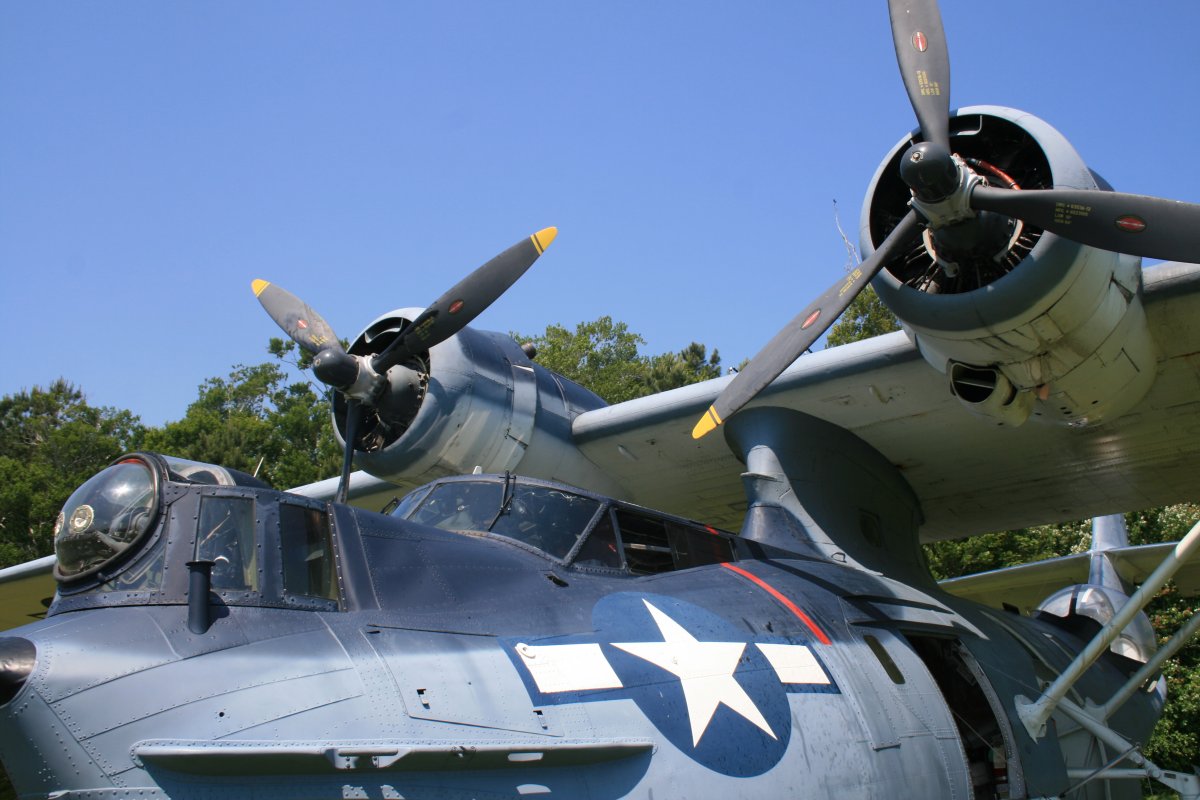 |
|
| B-25 taxiis in. My plane is visible across the field to the left at the base of the trees. |
| |
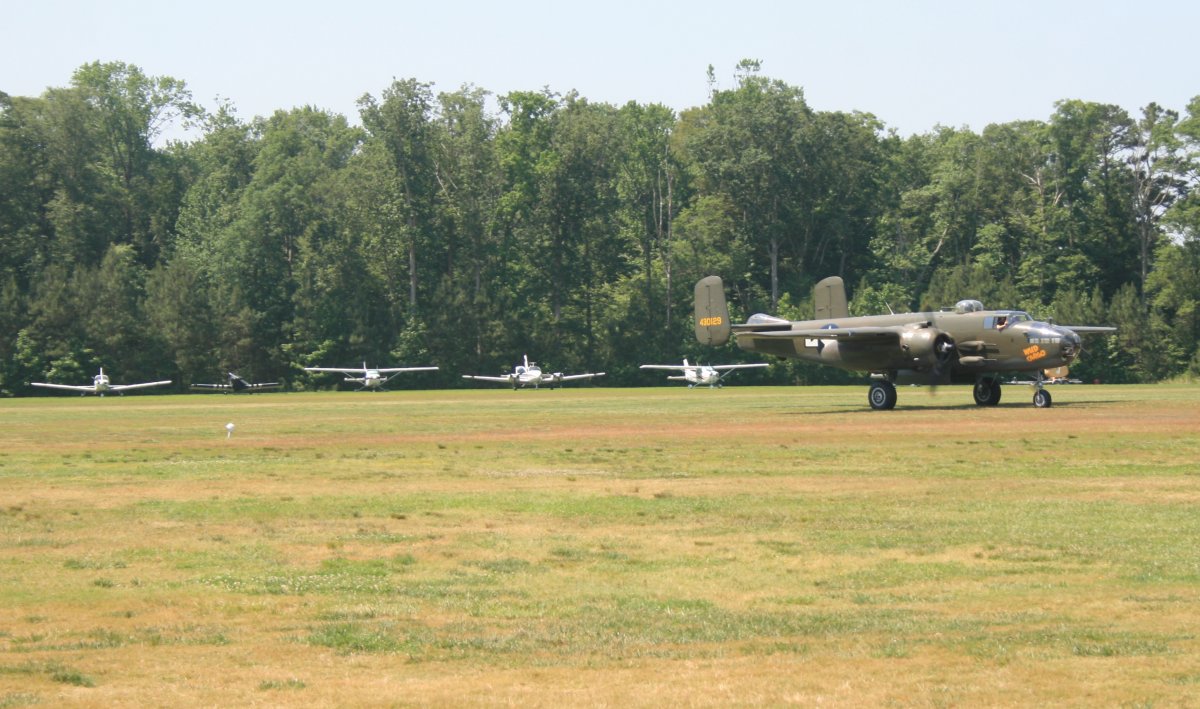 |
|
| In this hangar -- the "1934 Cottbus hangar" -- were all these German "Last Ditch" aircraft I've never even heard of. The hangar originally stood at the Cottbus Air Field in Cottbus, Germany, just southeast of Berlin. It was acquired, disassembled, shipped to America, and reassembled here in Virginia Beach. |
| |
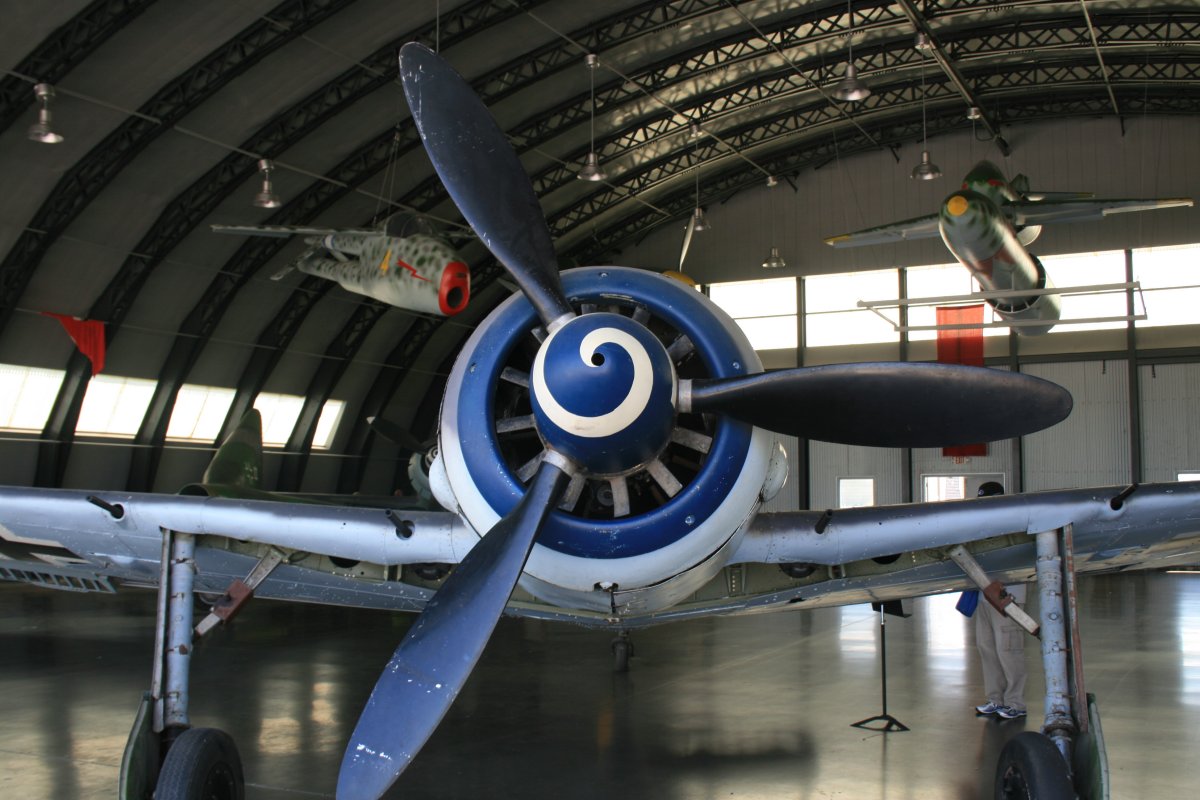 |
|
|
Another FW-190 A-8 - "Blue 4" - is in the foreground. This 190 has the original BMW 801 radial engine in it.
|
| |
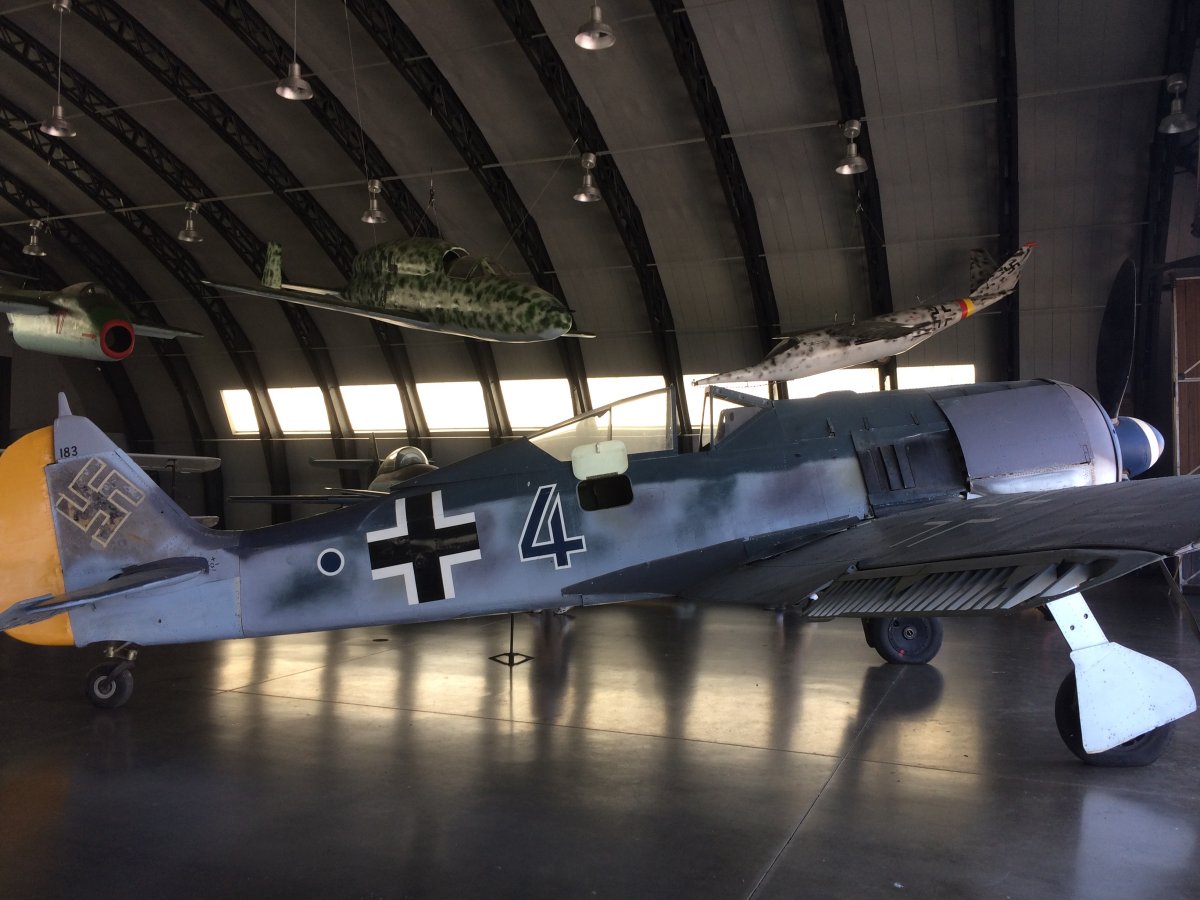 |
|
| This Italian Fiat G.46 was a military trainer developed shortly after World War II. |
| |
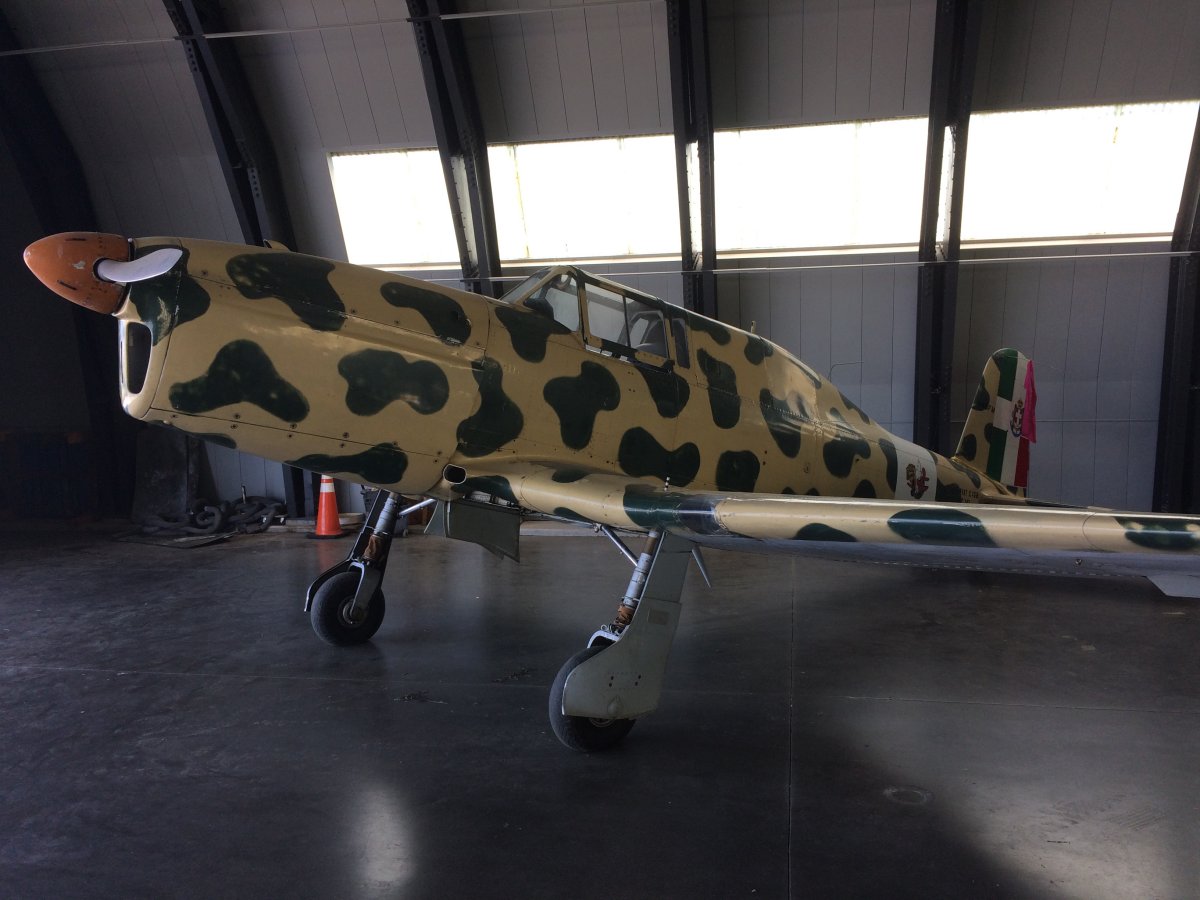 |
|
|
FW-190D "Dora" with the long nose. (because it has an inline engine as opposed to the radial). This is another replica built by Flug Werks.
|
| |
 |
|
| The Fighter Factory hangar is the restoration and maintenance facility for the Military Aviation Museum. |
| |
 |
|
|
A P-39 Aircobra being restored in the Fighter Factory hangar. Yes, the engine is behind the cockpit!
|
| |
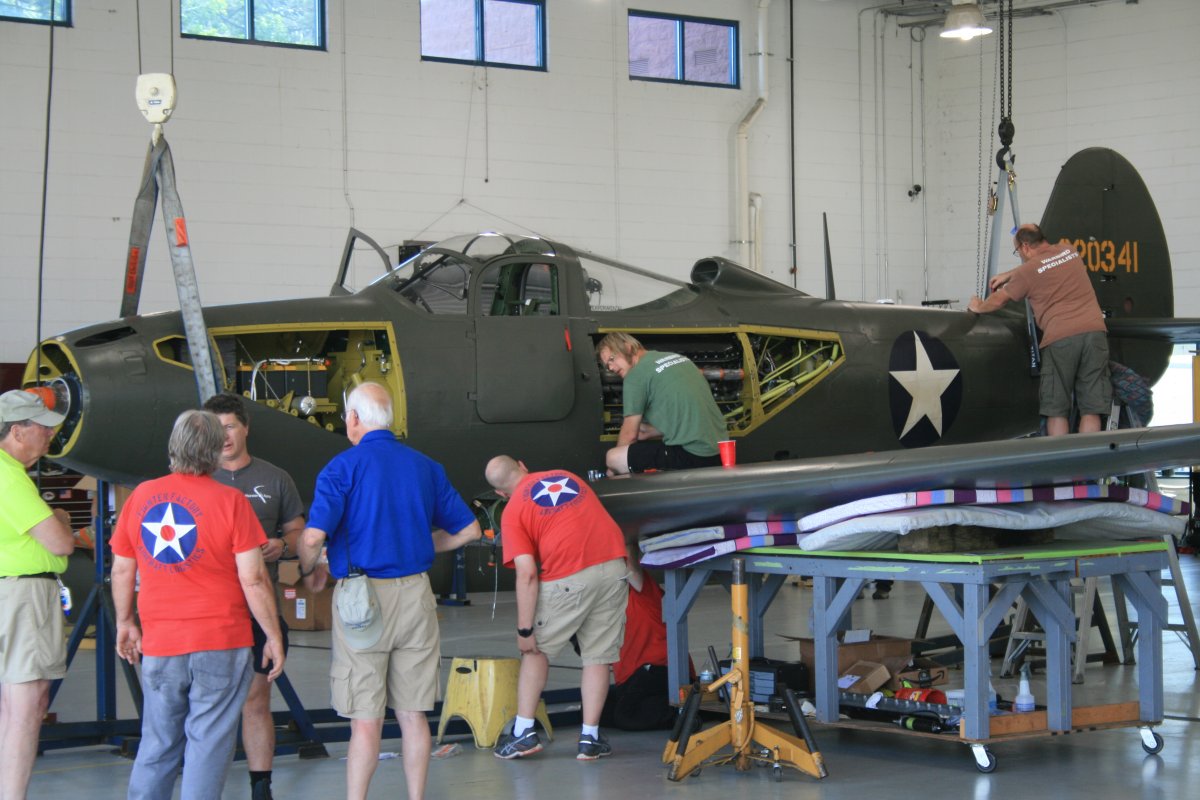 |
|
| T-6 Texans were well represented. Notice the dreaded German 88mm gun lurking in the foreground. |
| |
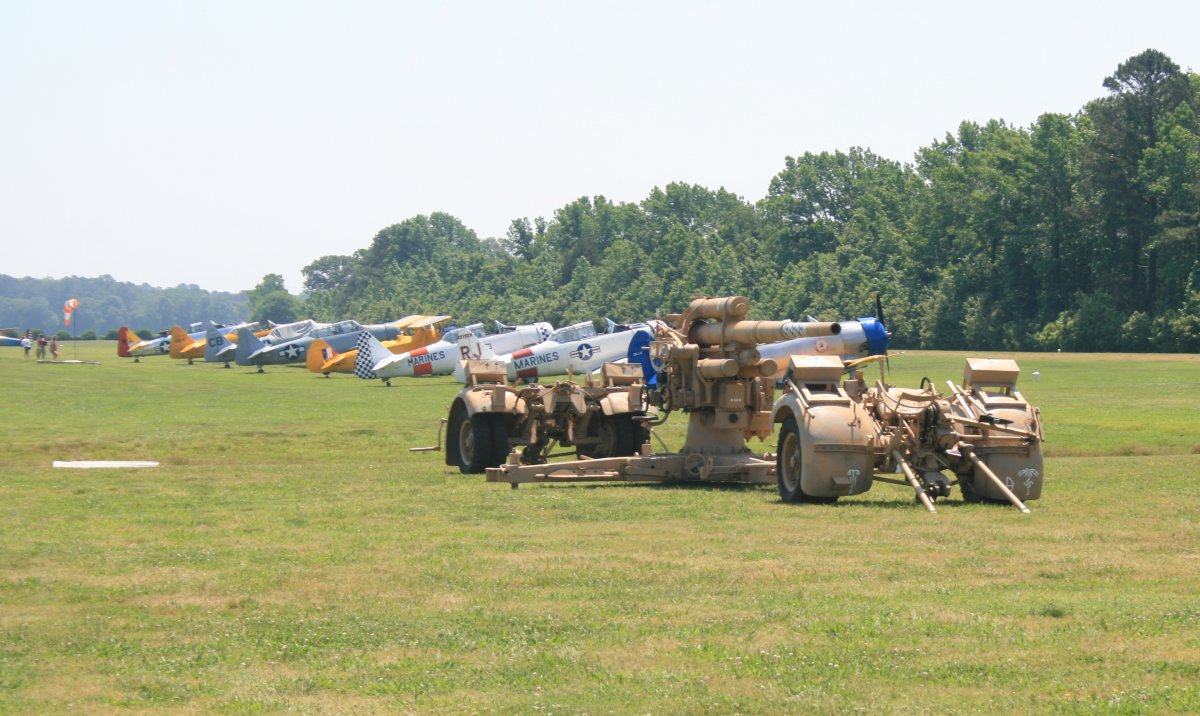 |
|
| It was hot and I was suffered from heat, not being acclimated to it yet. |
| |
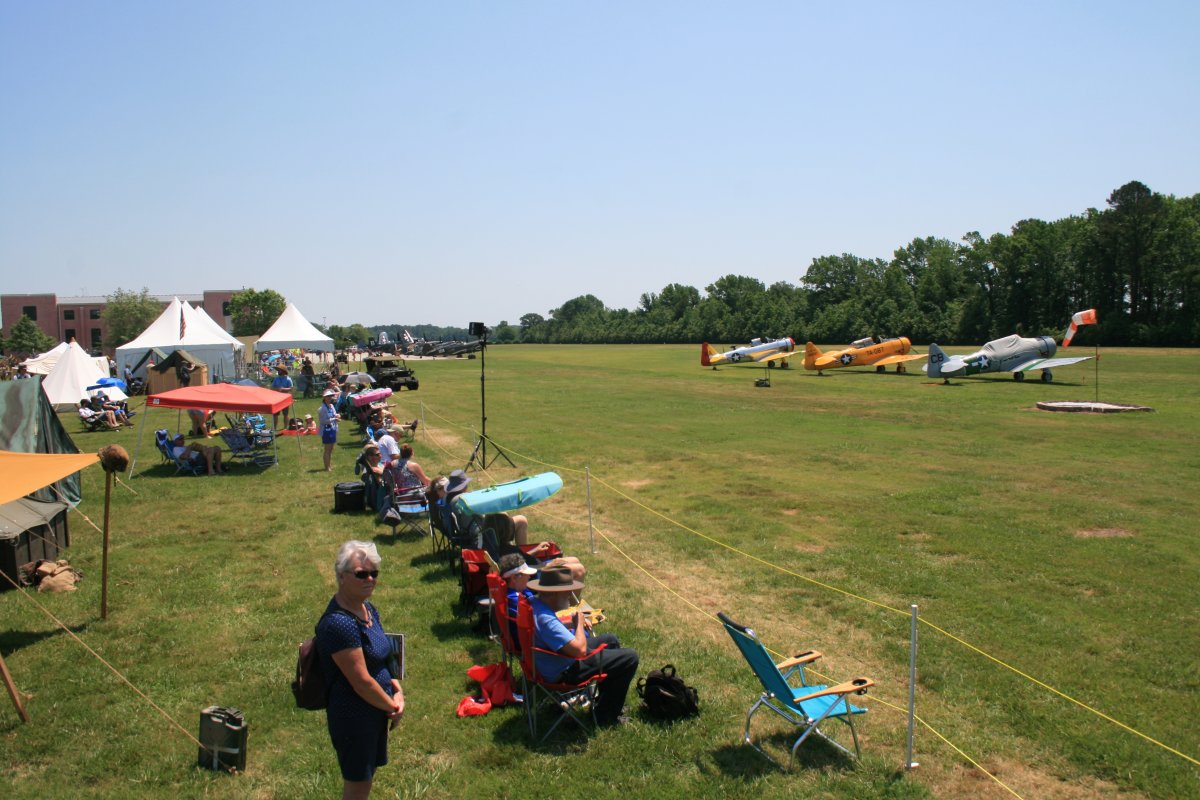 |
|
| Saavy airshow attendees brought their own comfortable folding chairs. But I had to sit in the hard aluminum grandstands. Next time I bring a comfortable folding chair! |
| |
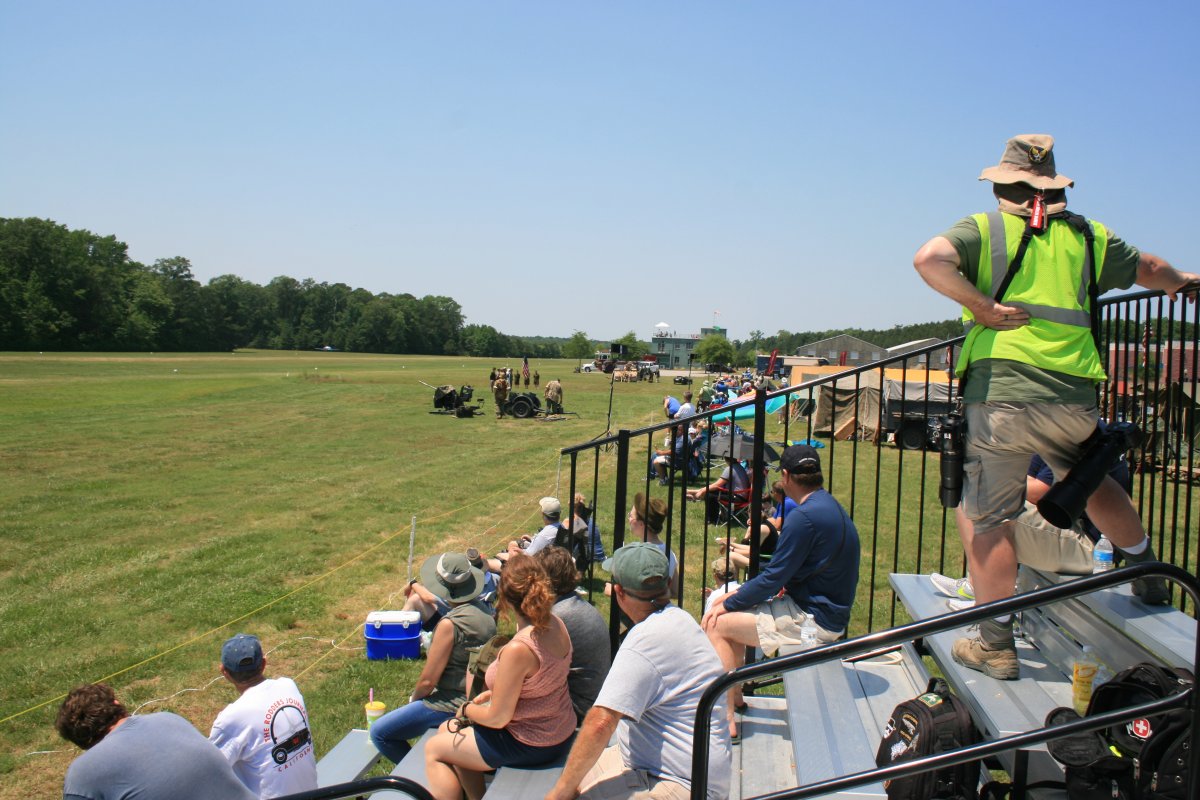 |
|
| The 88mm gun fired numerous times during the airshow. |
| |
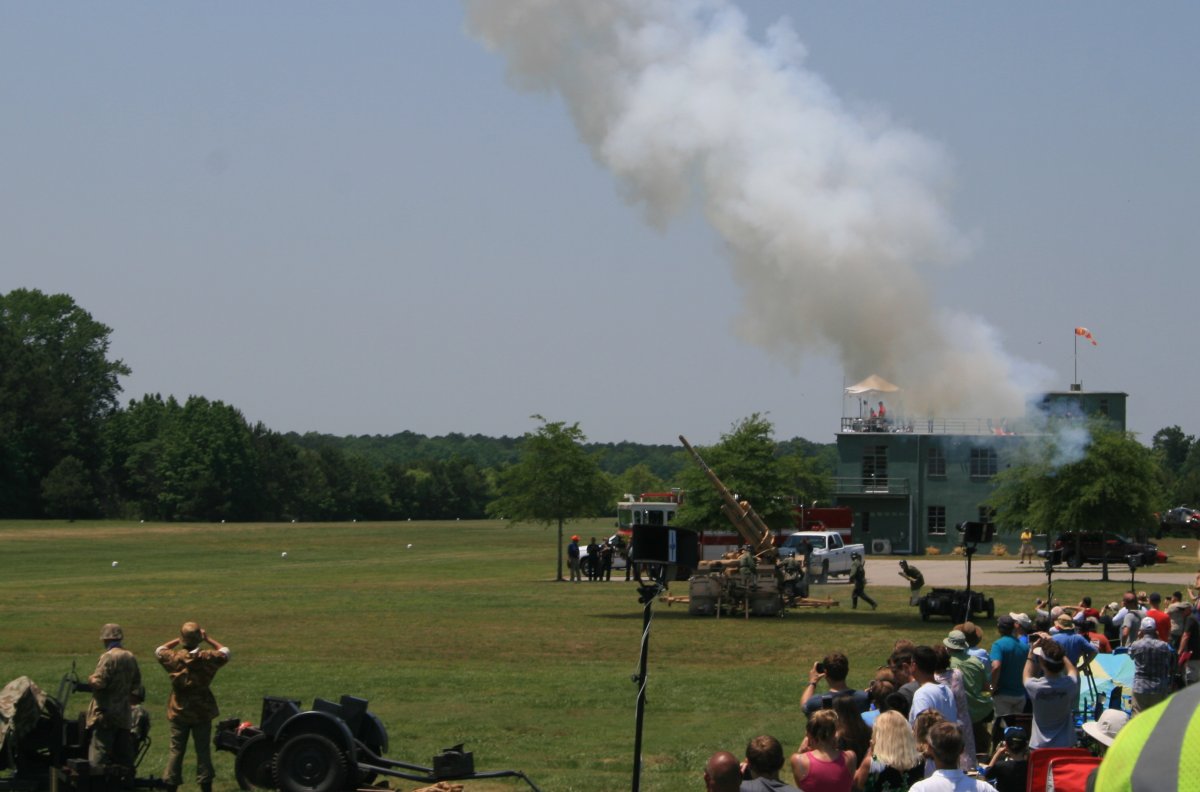 |
|
|
There were re-enactors all over the place, from every country. All wore their wool uniforms. But they all had shade where they could hang out.
|
| |
 |
|
| |
| |
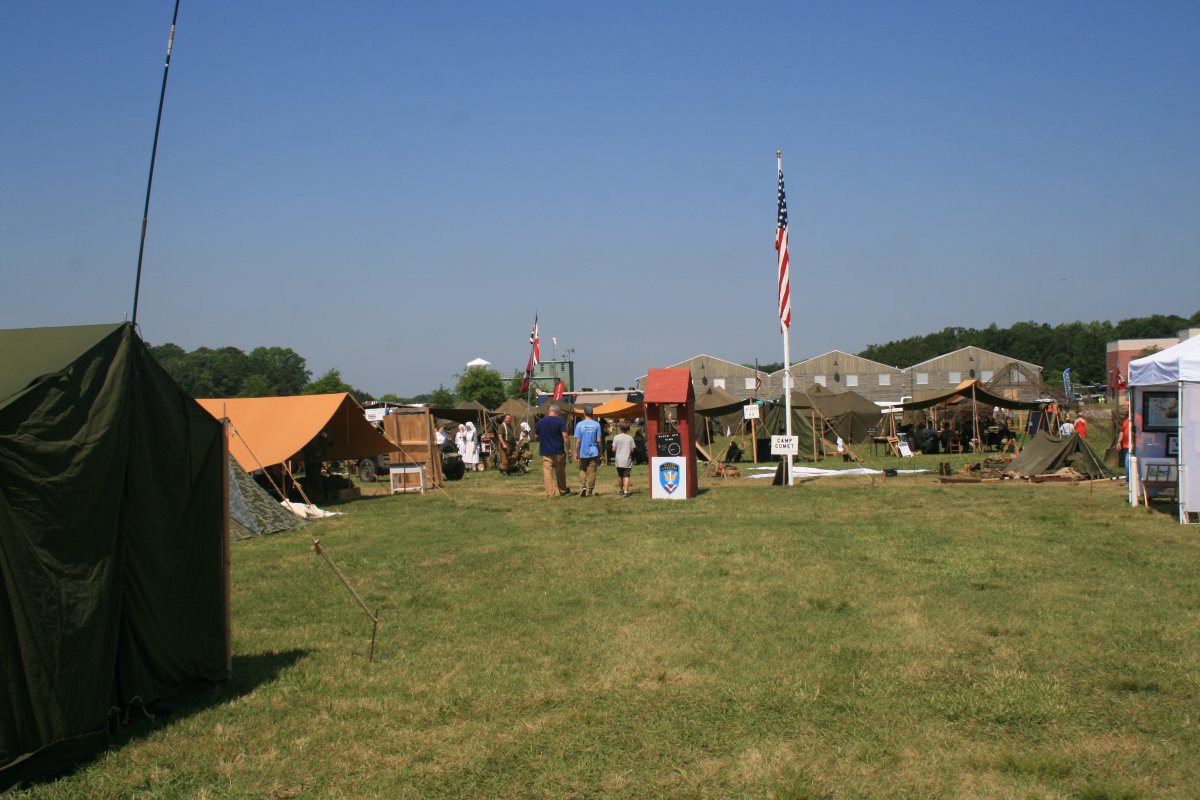 |
|
| |
| |
|
|
|
|
|
|




























































